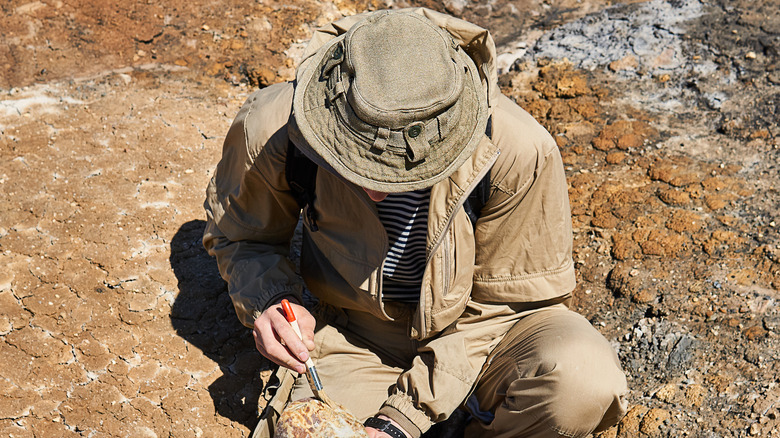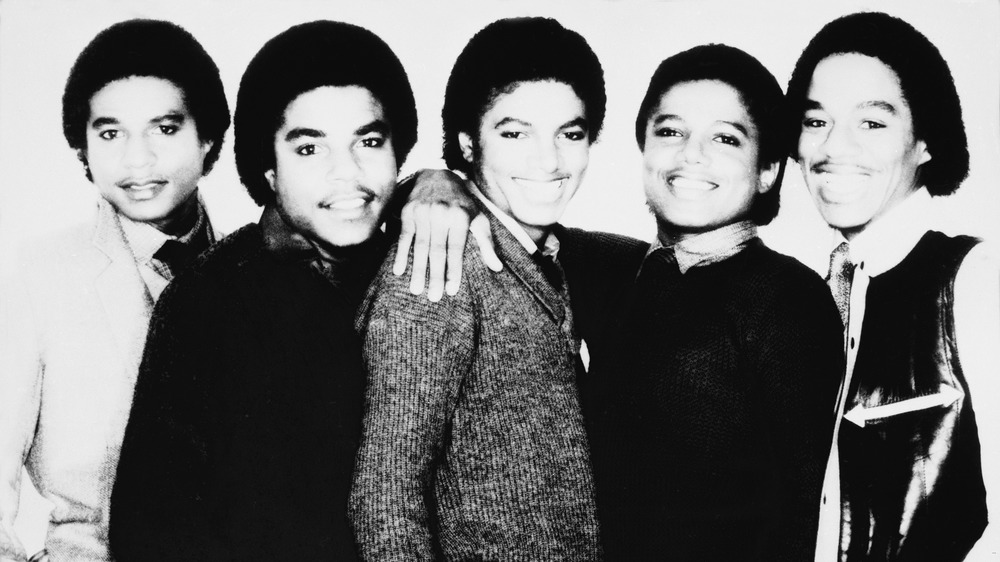
Who Is Giraffe Woman? The Story of Her Groundbreaking Journey

But, one woman decided she wants to look like her spirit animal and was willing to pay a heavy price. Get ready to read the insane life story of the woman who came to be known as “Giraffe Woman”
Only Five Years
This extraordinary and exceptional woman lived as a giraffe for five whole years. That’s a lot more than any of us, right? Still, what does that actually mean?

Well, she didn’t go out and live in nature, but she did find a way to elongate her neck. While others thought it was weird at best and crazy at worst, she took pride in her neck, thinking there was nothing more elegant and beautiful than looking like a giraffe. Still, it only lasted for five years. But why?
Who Is Giraffe Woman?
Her real name is Sydney Smith. Like many of the people who find themselves doing a lot to pursue a certain aesthetic, she’s from Los Angeles, California. It is said to be one of these places where it can be hard to meet someone who hasn’t had any work done.

Still, Smith will probably stand out even in the most unconventional of crowds. She is an entrepreneur and a model. By the time she reached 30, she was already famous for the unconventional changes she made to her body.
She Loved Giraffes From a Young Age
Some of us learn what we want to be at a young age, while others grapple with the question their entire lives. For Sydney, she knew she loved giraffes ever since she could remember. As a kid, she enjoyed anything and everything that had a giraffe print on it.

People could spot her, as well as her love for the tall creatures from afar. Still, at the time it seemed like the type of childhood obsession that will naturally be forgotten.
She Liked to Hang With Giraffes at the Zoo
The young woman’s obsession with giraffes went even further. While most children spend their time playing sports or hanging out with friends, Sydney used her spare time to go to the zoo and look at, you guessed it, giraffes! One of her favorite things about the animal was its long, skinny neck.

You have to admit they do look elegant and noble. If you have been overlooking the uniqueness of giraffes your entire lives – this might be your chance to reconsider!
What Makes Giraffes So Special?
If you want to understand Smith’s perspective better, you have to learn some cool facts about her favorite animal. The giraffe’s coat pattern is unique to each individual, and it functions similarly to human fingerprints — no two are the same.

It comes as no surprise that the tallest mammal is indeed the giraffe. Still, its neck possesses the same number of vertebrae that a human neck has. Both humans and giraffes have seven of them, but the giraffe’s vertebra is 25 cm long.
Why the Long Necks?
The thing Sydney liked the most about the animal is its long neck. But why do they have one? And what do they use it for? Well, they use their long neck in order to get food that is high above the ground. Their main meals are comprised of leaves from tall trees.
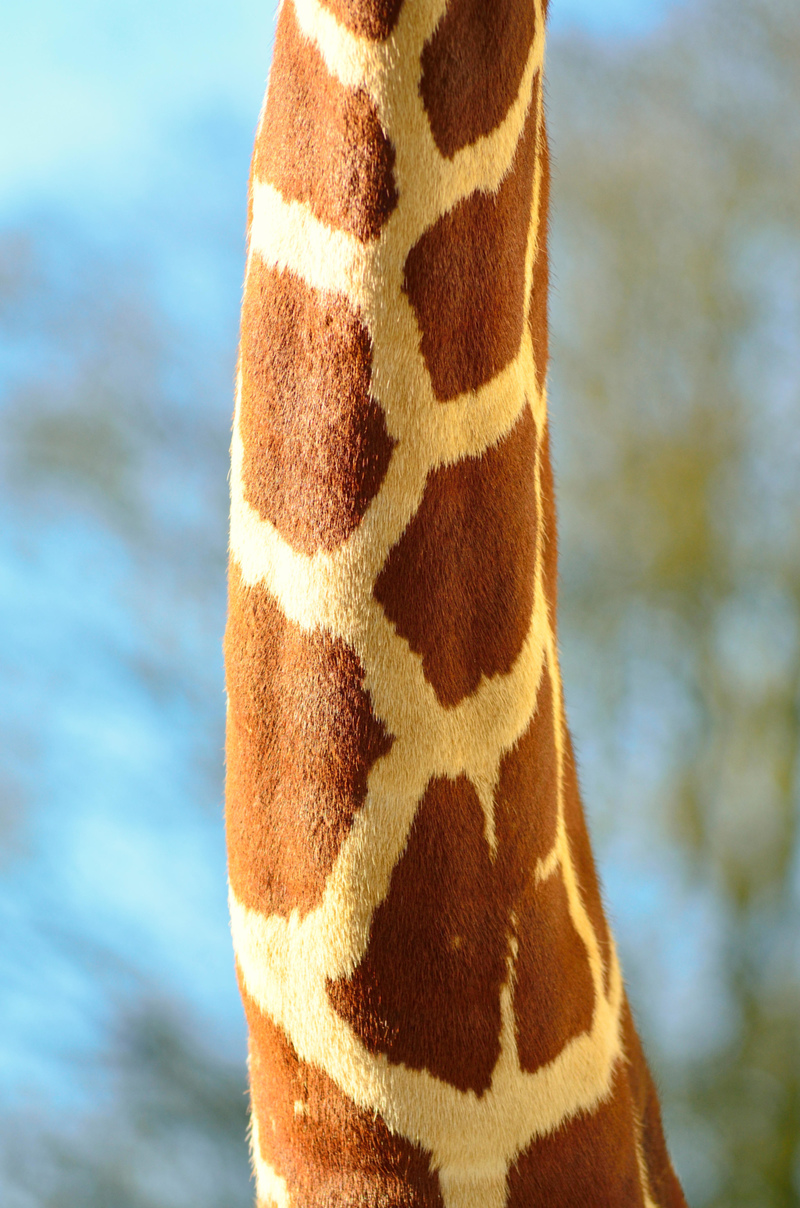
Their necks are accompanied by exceptionally long tongues so they can get to anything their tongues desire. Their height also helps them to see all around them, which means they can catch predators from afar and prepare.
Getting Inspired
Most of the time, in order to be able to know that something is possible, we need to see it first. Some inventive minds like Leonardo de Vinci and the Wright Brothers can envision things that were never seen before, but most of us need to follow someone else’s lead.

For Giraffe Woman, it was the Kayan people — a tribe located in Tibet. They are a minority in their country, known for wearing coil brasses in order to elongate their necks.
National Geographic Helped
When she was in middle school, a time when most of us start coming into our own, she started being fascinated by the idea of elongating her neck. She first had to learn that that was a possibility, of course.

Luckily for her, she loved reading, and one of her favorite things to read was national geographic magazines. Her obsession with looking like a human giraffe began when she was looking through an NG issue and saw pictures of the women of the Kayan Lahwi tribe.
The Kayan Woman
In the Kayan tribes, only women are known to sport the brass coils. When a girl turns five, she receives her first neck rings. They usually start with only five rings, as it is the only thing that would fit their tiny necks at that point.

If you thought maybe they get to take the rings off at the end of the day, the same way that we take off our jewelry, you’d be wrong. The Kayan women do everything with their rings, including showering and sleeping.
Growing Up With Rings
With time, as Kayan girls grow, more rings are added and the small ones are replaced with bigger ones. The coils do something peculiar and unnatural — over the years, they work to elongate the women’s necks.
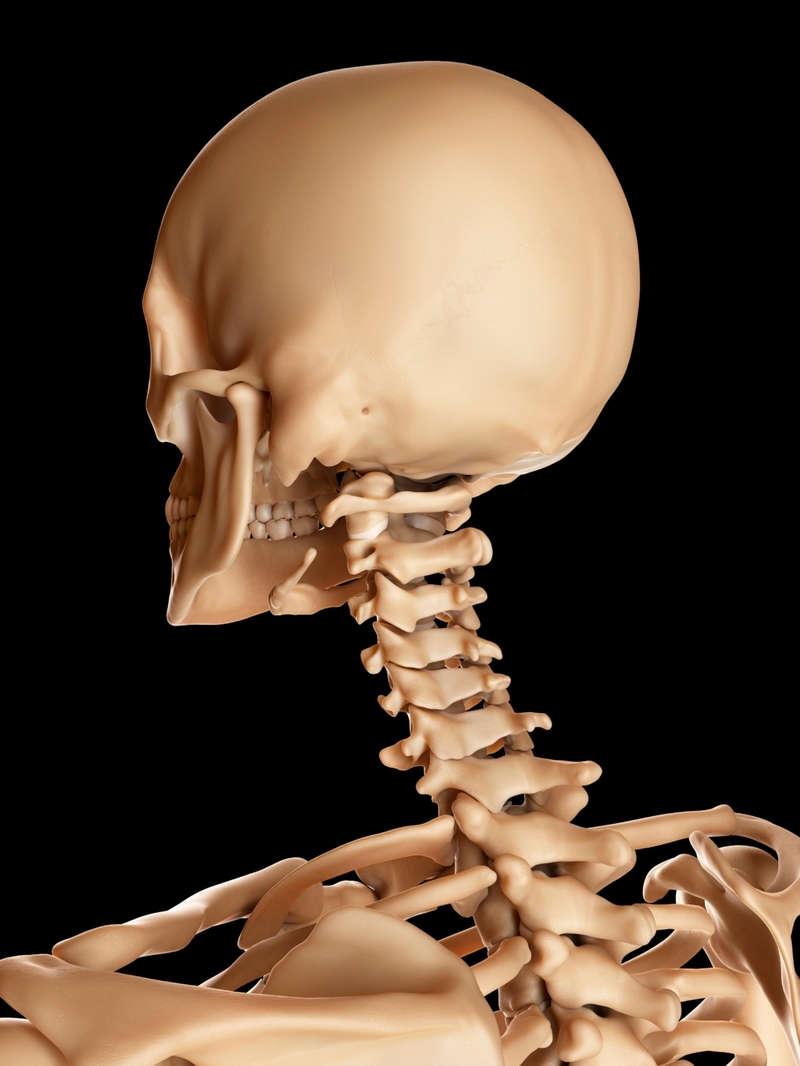
But wait, the truth is, that despite what it looks like, the neck itself doesn’t change at all. Yes, it stays the same, the rings just change the location of the collarbone, pushing it down. This creates the illusion of a more extended neck.
Why the Kayan Women Elongate Their Necks
Of course, the first question that comes to mind while looking at the Kayan women is why? Well, we don’t know for sure, but there are a couple of leading theories. Some say this is a tactic deployed to protect the young girls and women of the tribe from being taken away by other tribes.

According to this theory, the rings are put in order to make girls less attractive. A different theory claims the opposite, the purpose of the rings is to make women more appealing to men. Who doesn’t want a slim neck?
Kayan Women Want to Look Like Dragons?
Other theorists think that the coils are given to women in order to get them to look like dragons. Why dragons? The mythical creatures are important in the Kayan culture, so it makes sense.
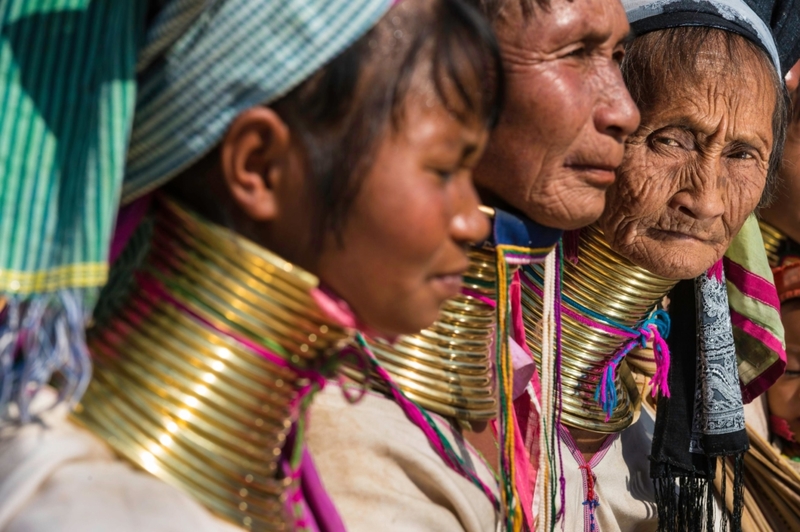
Let us lay one last theory on you — there’s a chance the coils are installed in order to protect women from being bitten by tigers! No matter the reason behind this unique custom, it inspired Giraffe Woman, who had reasons of her own.
How She Got Started
After learning that it was possible, she had one thing left to do — realize how she can achieve the look on her own. While the Kayan women start it at a young age, they also have centuries of experience passed on from older generations. This means that by now, they know exactly how it’s done.
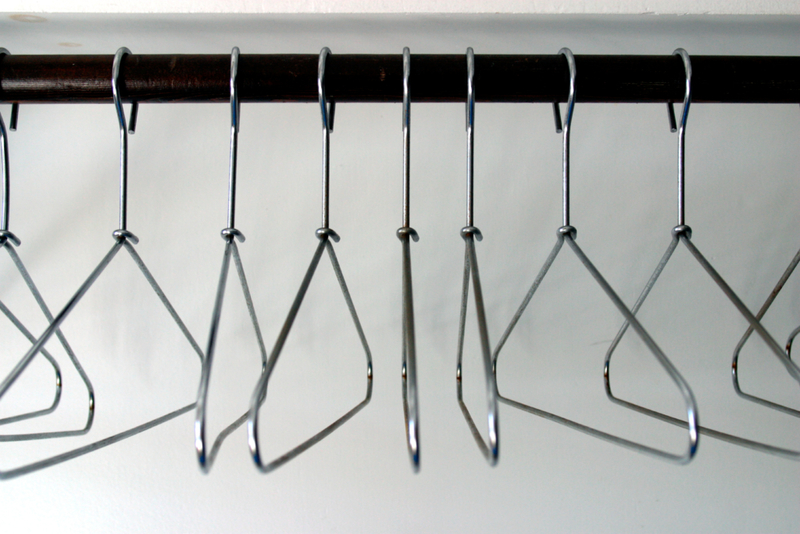
Sydney had to think about how to get the effect completely by herself. She started out using a household item we all have — wire coat hangers.
Her Parents Disapproved
She used the wires to create necklaces that looked as if she had the same brass coils as the Kayan women. When she wore the neckpiece and looked at herself in the mirror, she loved it and she finally felt complete. When she tried to share her passion with her parents she felt misunderstood.

They thought she was just playing and saw her desire to have a long neck as an impossible dream, but for her, it wasn’t a dream, it was a reality she wanted for herself.
Sydney Confused Everyone
Despite starting late compared to Kayan women, soon after Smith started using the wire from coat hangers as coils around her neck, she saw results. If you compared Sydney to her classmates you could see that her neck was getting longer and longer.

At the time other kids at school started calling her by the most logical name they could find — Giraffe Girl. Still, as she was just starting out, her neck wasn’t long enough to catch too much attention.
She Almost Gave Up
Sadly, sometimes when we choose to stay true to ourselves we find that people around us don’t accept us. The younger we are, the harder it can be to block these voices. After a few years of using her own DIY neck rings, Sydney started to wonder whether this is what she really wanted.
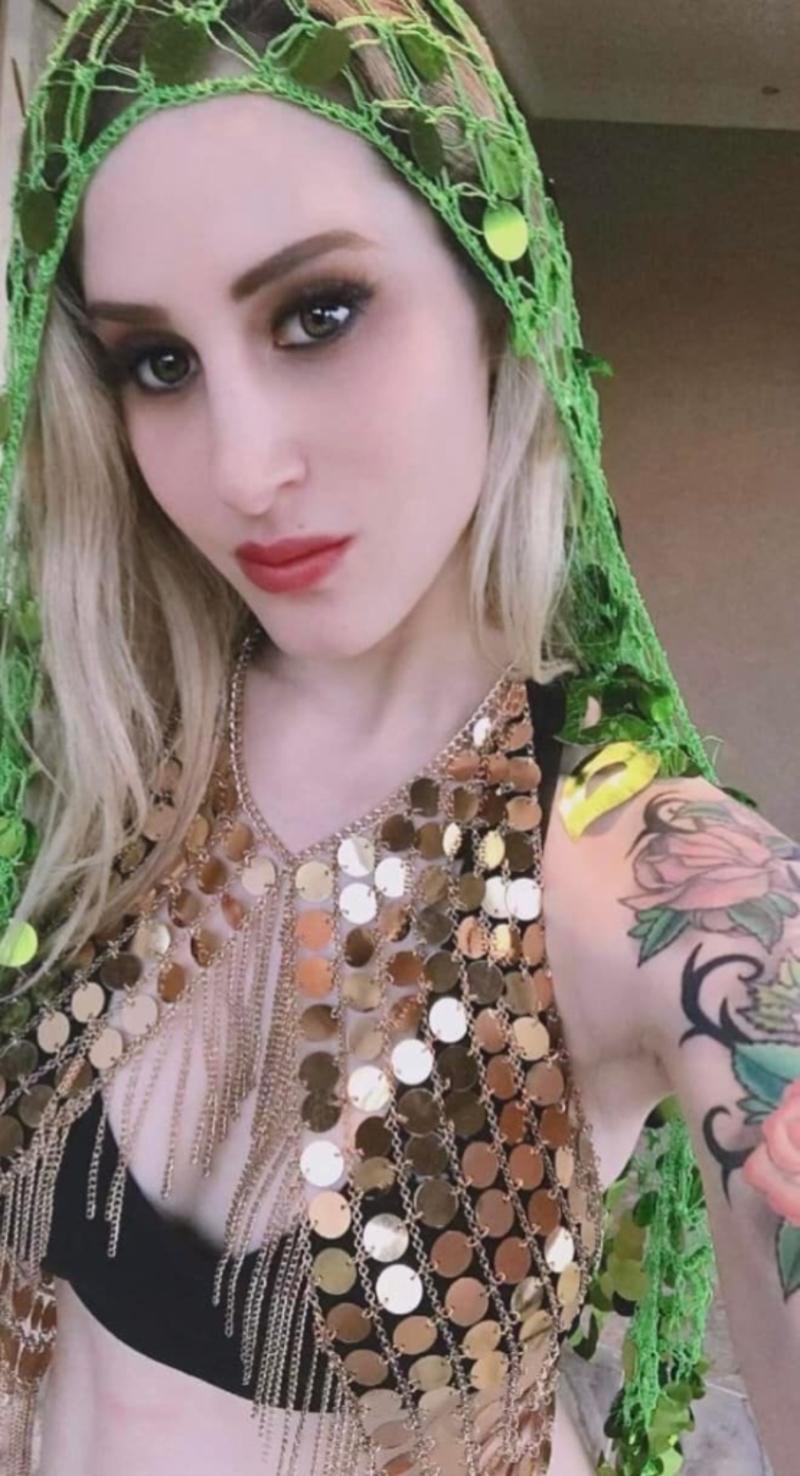
At this point, she decided to take a break from elongating her neck. This actually allowed her to start the process again later, only this time she was 100% sure of what she actually wanted.
Lady Gaga and Giraffe Women
What made Sydney so sure she wanted to carry on with her giraffe life? Well, she was actually inspired by none other than Lady Gaga. Just when she had doubts, she saw the award-winning singer wearing a dress made out of meat. This affected her greatly — she realized she wanted to be loyal to who she is, even if others found it weird.

At least Gaga got her. People who only follow rules don’t usually end up having articles written about them. With that in mind, she was ready to start her transition.
A Tricky Transformation
At this point the year was 2011, and she was finally ready to commit to what she knew was her identity and her truth. At this point, Sydney Smith was already an adult and she didn’t need anyone’s approval. She went to a friend of hers and asked for custom-made rings — and she got them.
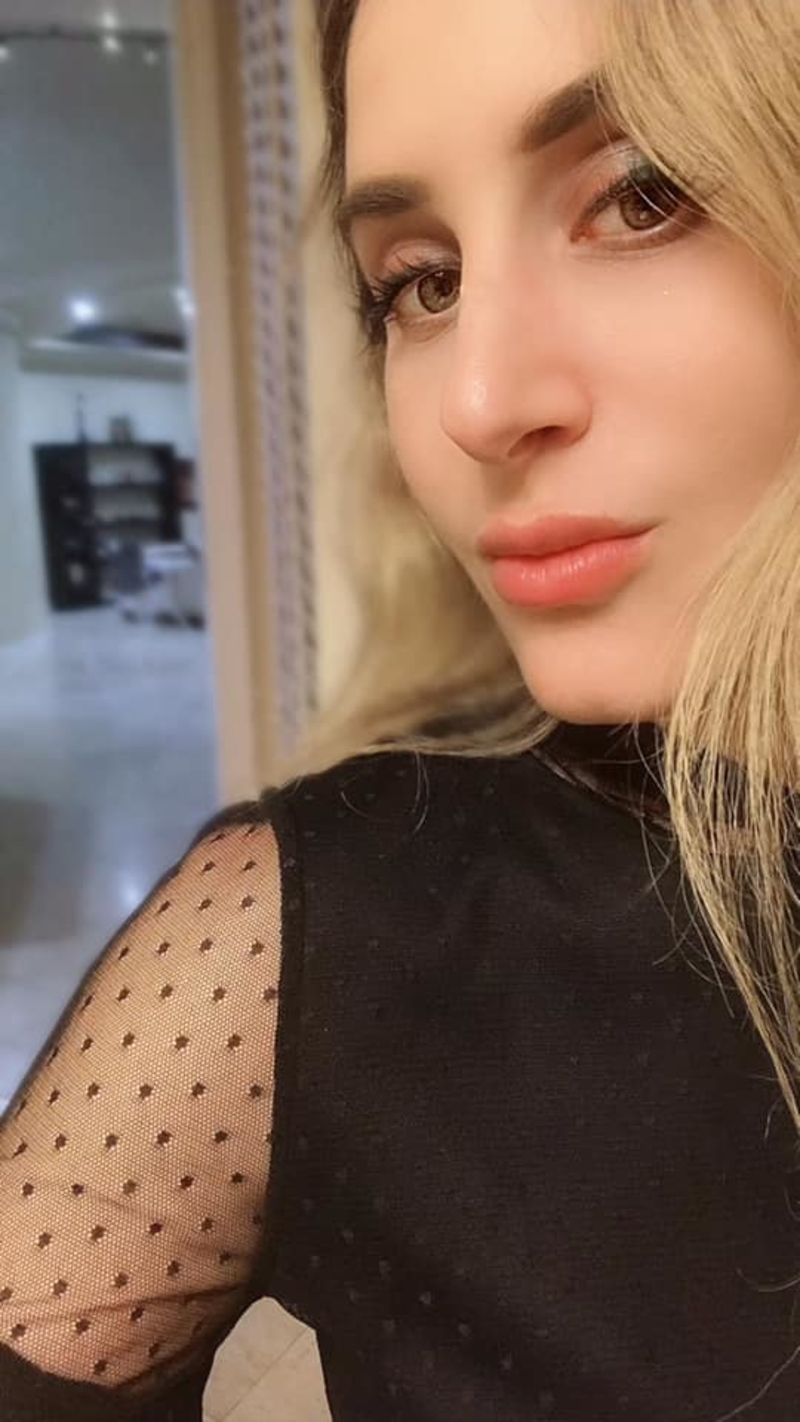
She started out small, but like most beginnings, it was tricky. The rings burned her skin and caused rashes. Smith decided to power through it, she was ready to become a true giraffe woman.
She Wanted It to Be Done
Many times, when we wait for something for so many years, we find that it’s impossible to contain ourselves. Sydney got impatient and didn’t want to wait another second. She wanted to be done with her transition as fast as possible, which is why she kept adding new rings quickly.

She didn’t care about the weight of the rings or about the pain. Still, making such a change took a long time. After five years she had 15 rings on her neck. They wight a total of 5lbs. Her neck got to the astonishing length of 10 inches.
Believe It or Not
Now that she was done, her new neck caught everyone’s attention. No one in Los Angeles has ever seen someone with neck rings before. People would stare at her and stop her in the street. She became known as a Giraffe Woman. On social media, she shared before and after pictures of herself, showing people every picture of herself while she was going through the transition.

At this point, she also got attention from the media. She was featured on Ripley’s Believe It or Not! and that was just the beginning.
Fame Has Its Downsides
Sydney got famous and even found herself some modeling jobs. At first, she loved every minute of it. At this point, just like any other celebrity, people started forming their own opinions of her and what she was doing with her body. As you can imagine, not everyone approved.

Many claimed Sydney only changed her body to get attention, others said she was disrespecting Kayan people by using their tradition for her own purposes. She tried to stay strong, but obviously, these things affected her.
Strangers Surrounded Her
At first, fame was fun, we mean, who doesn’t like attention? Especially if you can make money off of that attention! The problem is that after a while attention can feel empty. She couldn’t even go to the grocery store without having people stop her and interrupt her.
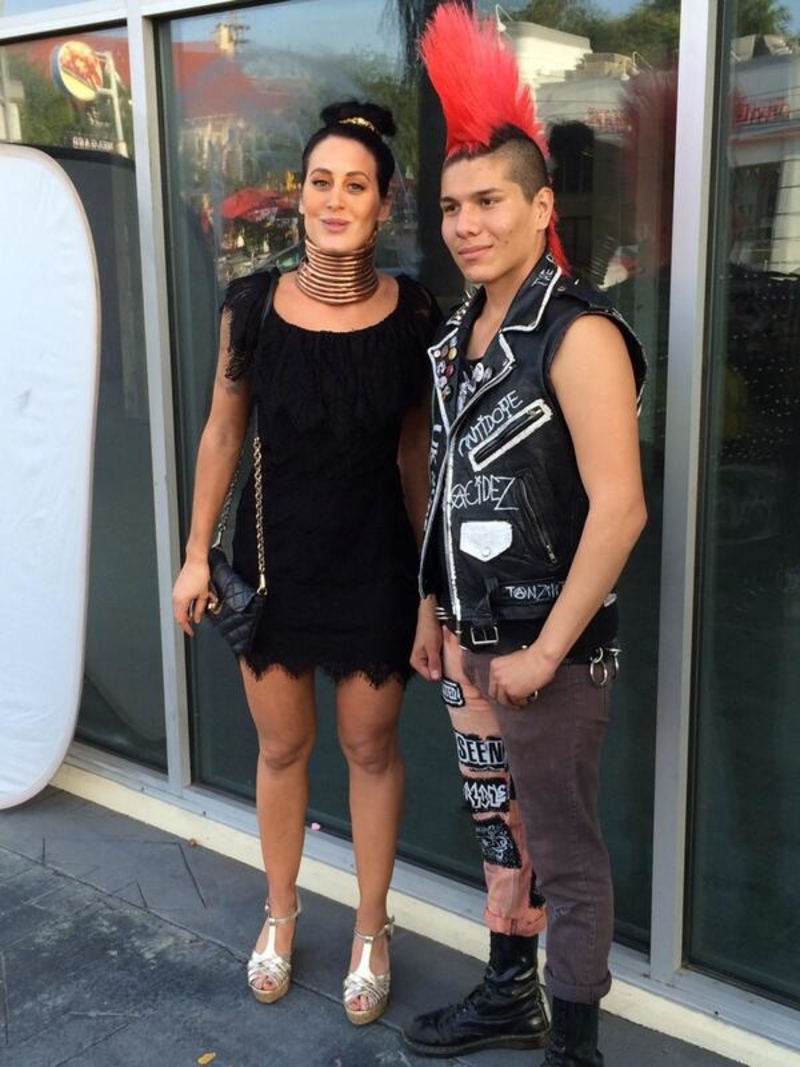
Strangers would surround her while she was just trying to get things done. Many people cared more about her outer appearance and less about what was inside.
She Lost Her Freedom
She could no longer hike, swim, or do anything that included too much movement. Kayan women don’t drive, but Sydney was living in America, where cars are needed in order to get from one place to another. Everything all around us is made for people with a standard neck.

With such a long neck on her shoulders, it became hard to drive. She did not anticipate this complicating her life as much as it did.
A Jobless Giraffe Woman
Because her appearance drew so much attention, she had to find jobs where people didn’t see her often. She ended up finding a job as a cook in a kitchen. Still, working in the kitchen was hard.

Most people who work physical jobs find that it takes a toll on their bodies, and if you add an elongated neck to the equation, it becomes even harder. It was hard for her to find a job she could do. Dating became challenging as well. People were either uninterested because of her rings, or that’s all they cared about.
Doctors Did Not Approve
At this point, doctors wanted to chime in and give their opinion of altering your neck the way Sydney and the Kayan women did. Orthopedic surgeons say that wearing rings on your neck can be terribly dangerous. The Kaטan women start out young, and according to doctors, this is an advantage.
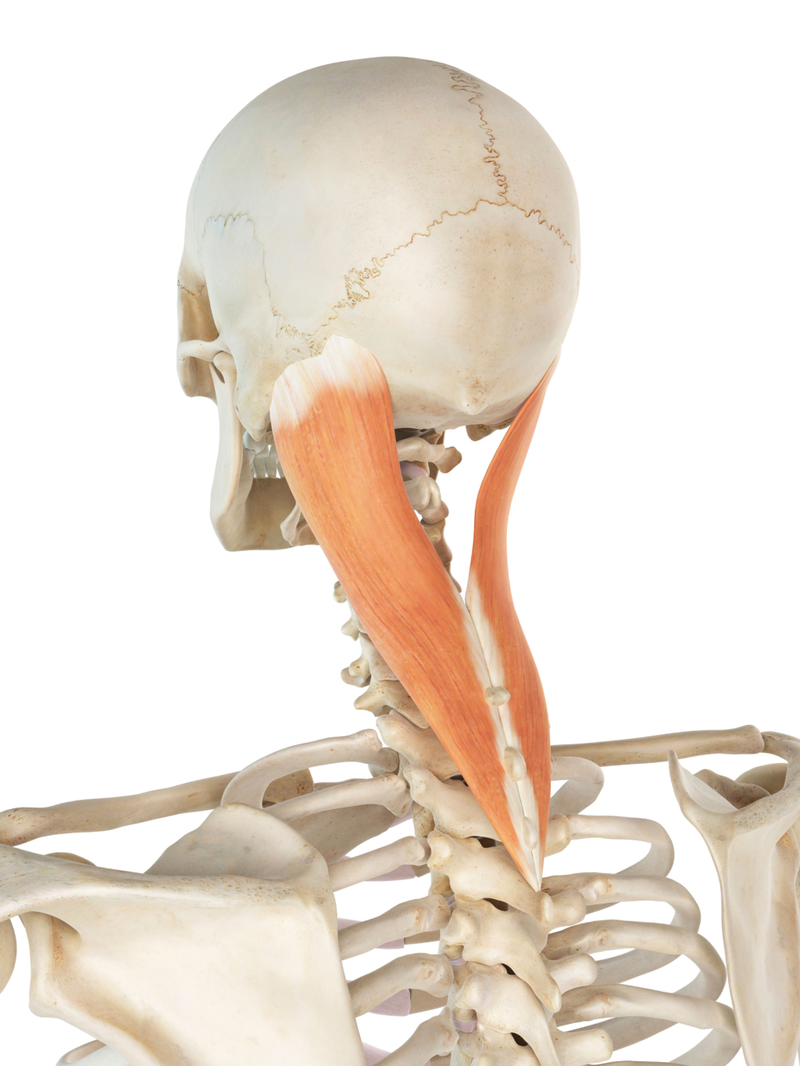
Starting out as late as Sydney Smith did means you are only stretching your skin, nothing else. At this point, was it even worth risking her health for a dream that no longer served her?
Regret
At one point, she got so desperate to get her old life back that she decided to remove the rings. But, at this point, she has gotten used to them, the way she looked with them on — without them she wasn’t sure who she is.

Not sure what to do, she put the rings back on, but not for long. She knew that she had to make her final decision soon before it would be too late for her. Who will she be without the rings on her neck?
Removing the Rings
After going back and forth in her mind for a long time, she finally decided she was ready to leave Giraffe Woman behind. She knew it was her time to discover who she truly was beyond that image. With a friend there with her for moral support, she removed all of her rings. It took a lot of time to remove them, but after five years of hiding, her neck was finally exposed.

This was the first time in a very long time that Sydney saw her bare neck.
What Happened Next?
Obviously, even after removing the rings, her neck was longer than it was before she started. Her skin was bruised and her muscles were weak. But she knew that it was worth it. Doctors say her neck will never get back to normal. She has to do special exercises to strengthen her neck.

Still, she does not regret it. If she hadn’t done it, she would have always wondered what if. Now she doesn’t have to wonder anymore. She can feel confident that she made the right choice. Today she has a husband and a daughter. She has no plans of ever putting the rings back on.
The Most Peculiar Body Traits Known to Man
Our bodies are made up of, approximately, seven octillion atoms. That’s a seven followed by twenty-seven zeros. All those atoms can build and get arranged according to our DNA in a whole lot of different ways, or other things can affect them. This list has plenty of weird and uncommon things that can naturally happen to our bodies.
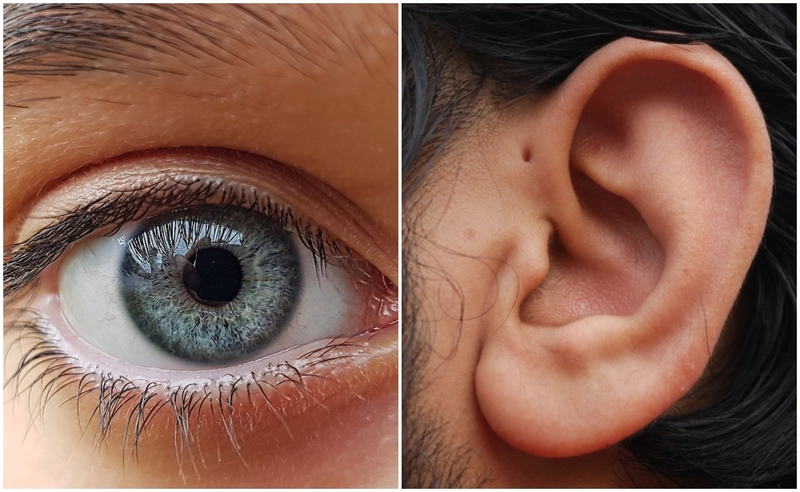
You might have a couple of these, you might have heard of them, or they might be so rare that only a single recorded person has ever displayed the trait. Nonetheless, read on and find out how amazing, strange, and intriguing our bodies can be.
Eyes in Different Colors
If you like reading fanfiction, there’s a pretty good chance you’ve heard of this one. Having two different eyes is known as heterochromia (literally, “different colors”) and it’s an effect of something called Chimerism when two developing zygotes fuse together in the womb. This is actually quite a bit more common than you might think, but twins or siblings don’t often have different colored eyes due to how regressive genes work. It’s complicated.
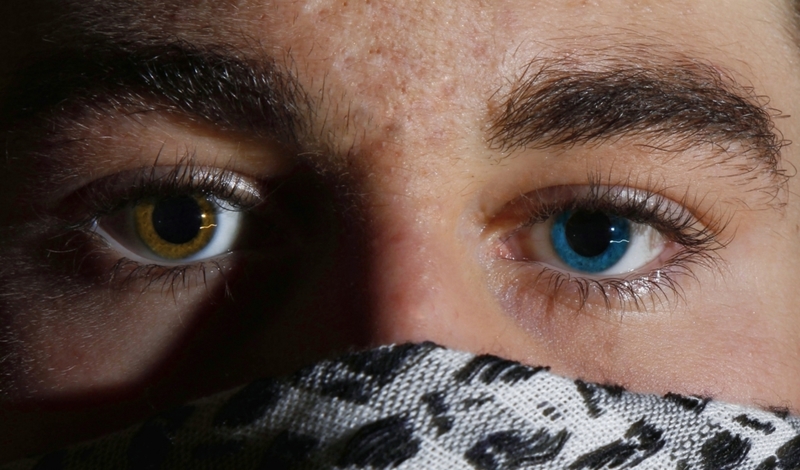
Chimerism, and heterochromia, are harmless. There are plenty of famous people who have this trait, such as Mila Kunis, Benedict Cumberbatch, and Olivia Wilde, though the results may vary.
Golden Blood. But Not Actually
The rarest blood type in the world is called Rhnull, or “Golden Blood.” It’s so rare because it has no antigens, meaning that literally, everyone in the world can receive it from those who have it. Antigens protect against diseases, which is great for the people who need blood transfusions since the blood will never react poorly to them.
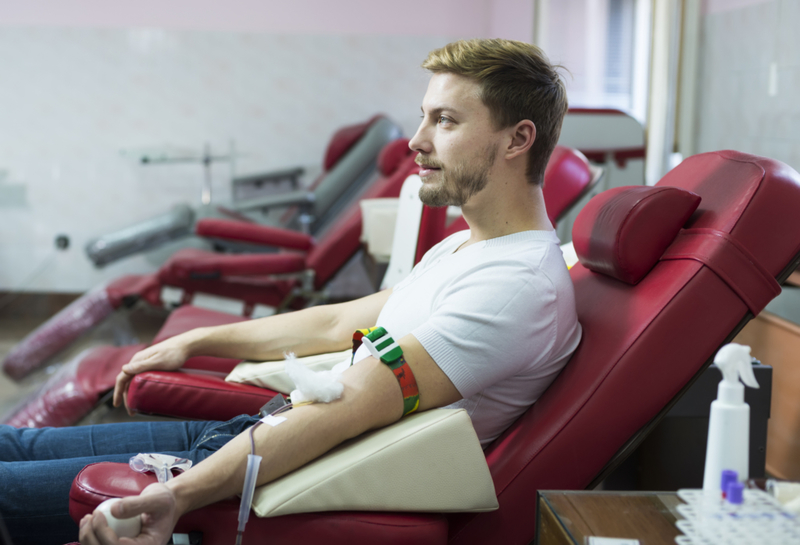
On the other hand, the forty people in the world who produce this blood naturally don’t have a great time, since their immune system doesn’t do that well. Most blood types have A, B, O, or AB antigens, but this type has none of them. The supply is incredibly useful and highly sought, but only nine people of the forty regularly give blood.
Long Palm Muscles
Known in the scientific community as palmaris longus, this is a muscle that is useful for climbing trees. It’s not something that most of us need that much anymore, but there’s a relatively good chance you have it. To see if you have it, place your arm on a flat surface like a desk and touch your thumb to your pinky finger.
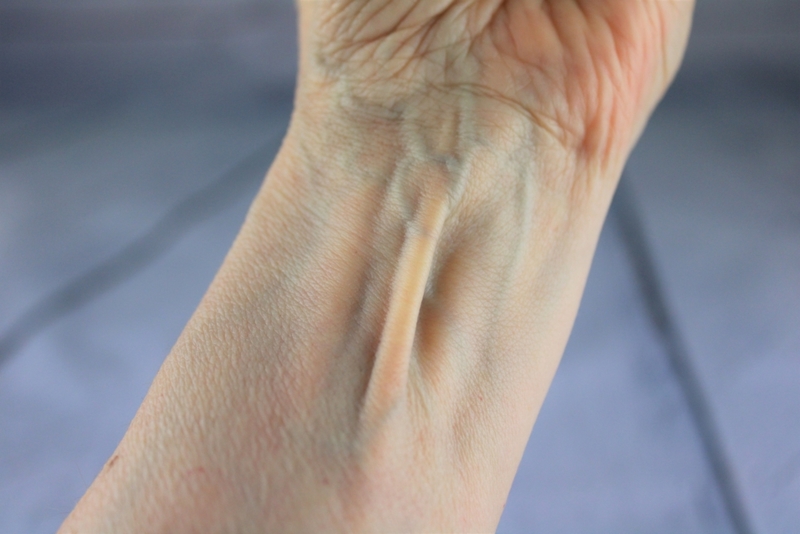
If you have a long palm, the muscle and tendon will pop out of your wrist. I definitely have it, which isn’t a surprise. I have some dang long hands. If you do have them, go do some climbing and use what nature gave you.
A Gene That Means You Need Less Sleep
There are a few famous people in history who benefit from this gene. The DEC2 gene basically shortens a person’s sleep cycle, so they feel just as rested on less sleep. Illustrious figures like Winston Churchill, Nikola Tesla, and Margaret Thatcher have all used this gene to get tons of work done while other people needed their sleep.

Of course, those people might not have called it a blessing, no matter how nice it sounds to us. Instead of the normal eight hours we all SHOULD be getting, these people got by with between four and six hours. Despite the number of figures who have profited from it, this is a pretty rare mutation.
The Gene That Gives You Unbreakable Bones
Okay, they aren’t unbreakable, but they’re much denser than normal and that counts for something. A mutation in the LRP5 gene not only bakes your bones with power and makes them hard to break, but it makes your skin less prone to aging. Sounds like a pretty good combo. On the other hand, people with this condition tend to have issues with joint replacements if they haven’t been watching their weight.
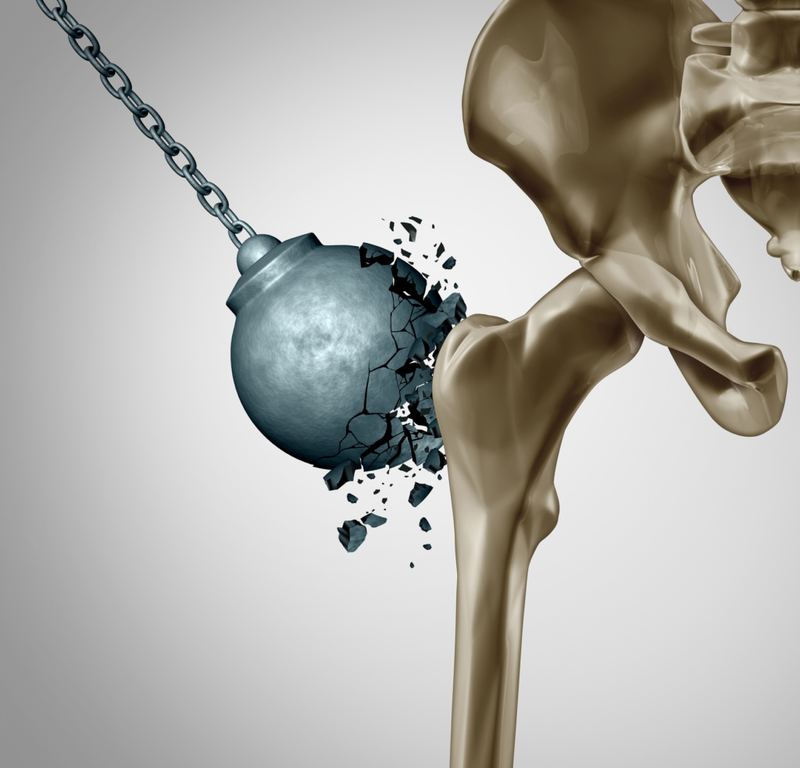
Imagine trying to do surgery on Superman’s bones. Even if it’s something he needs, you’ll be going to have to put a lot of effort into it.
An Extra Hole in Your Head
Having a little hole near your ear is called a preauricular sinus, and is discovered during a newborn’s first examination. These small pits develop due to developmental defects of the first and second pharyngeal arches, or, you know, the ear bits. They can occur on one side or on both, but for the most part, they’re harmless. As long as you don’t use them for earrings. We really don’t recommend that.
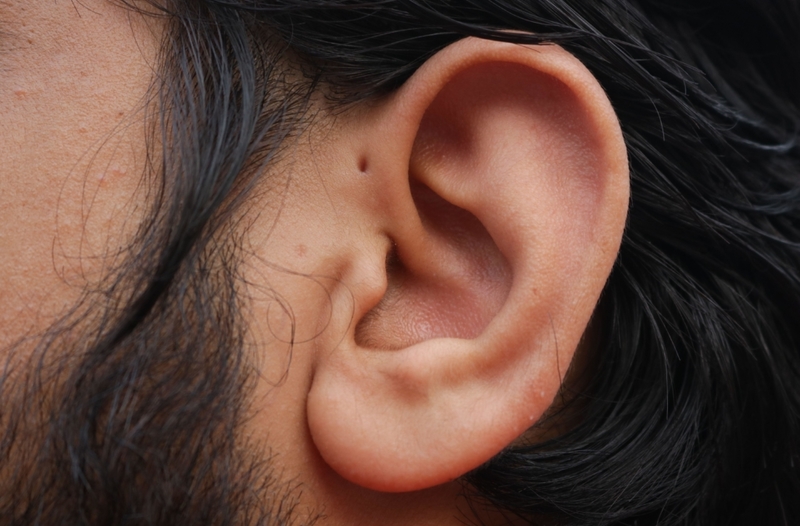
However, these kinds of ear malformations can sometimes be associated with renal anomalies. Even if they do become a problem, getting them dealt with is usually no big issue.
An Extra Neck Rib
More prevalent in women, having an extra rib near the cervical spinal region (or “neck” for us dum-dums) is known as a cervical rib. Somewhere between one and three percent of the people in the world have a cervical rib on one side or both. They may reach down to connect to the first rib, or they may not be fully formed.

Often the bone is tiny and hard to notice even on x-rays, but they can sometimes cause complications. A cervical rib means higher chances of nerve or blood vessel compression between the rib or its muscles since the ligamentous connections take up a smaller space.
Less Means More for the Heart
All of us have the PCSK9 gene in us, but some of us have it in a lesser amount, somehow. Maybe it’s just a weaker version? It’s hard to have less of a gene – you either have it or you don’t. Those that lack it, or present the deficiency somehow, have a ninety percent less chance of heart disease, and hardly have to bother with cholesterol at all.

The gene provides instructions on how to make a protein that regulates the amount of cholesterol in your bloodstream. You might know there are two forms of cholesterol, good and bad, but even bad cholesterol has some uses.
See More Colors
Humans, for the most part, are trichromats. That means that we have three kinds of cone cells in our eyes to interpret and identify colors. There are those, however, that have four kinds of cone cells in their eyes, known as tetrachromacy. They can’t see colors that don’t exist, but they can perceive the differences in colors much closer.
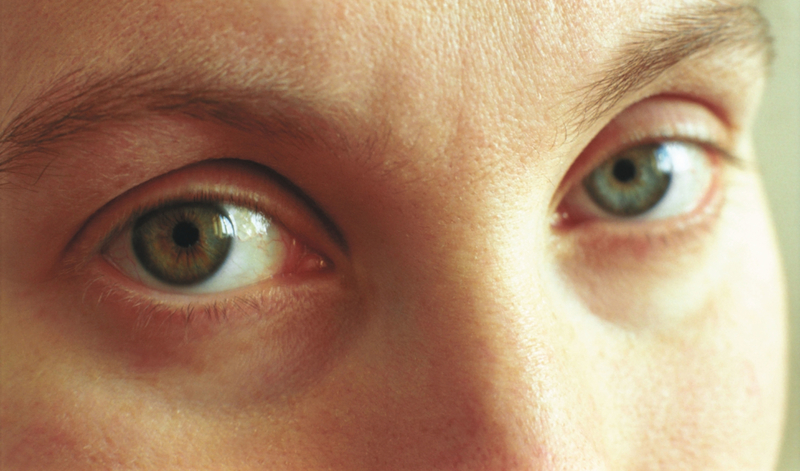
Is that couch dark brown or black? We don’t know, but tetrachromats will be able to tell us. It was the normal condition of most mammals in the past, but they have lost one or two of their cones by now.
Get Those Elizabeth Taylor Eyes
Having long, beautiful lashes is something that everyone wants if they want to look their best. What about a double layer of eyelashes? This is called distichiasis, and it does just that. There’s a technical way to describe this, but really what it does is make your upper lashes thick, full, and popping.

Actress Elizabeth Taylor, known as one of the most beautiful women in the world, sported this to make things, frankly, a little unfair. This is a good boost, but it can create a sensitivity to light, irritation, sties, and droopy eyelids. It is still a rare trait.
The Rare Genetic Condition Known as…Red Hair
This one is pretty well known. In fact, we wouldn’t be surprised if there’s someone in your family that has it. But natural red hair is a lot rarer than you might think. It only occurs in about two percent of the population, most common in northern and western Europe. It’s a recessive gene, beaten by every other color.

For someone to have natural red hair, both parents have to have it. You may wonder why they seem far more common, but it turns out something like thirty percent of advertisements feature models with red hair. Plus, there’s hair dye and plenty take the opportunity to try out this fiery shade.
What Is the Rarest Eye Color?
The least-common natural eye color, according to researchers, is gray. Less than one percent of the population feature this striking eye color. It’s due to a low level of melanin in the front layer of the iris. The most likely place to find this feature is Eastern and Northern Europe, which also has higher numbers of green eyes.
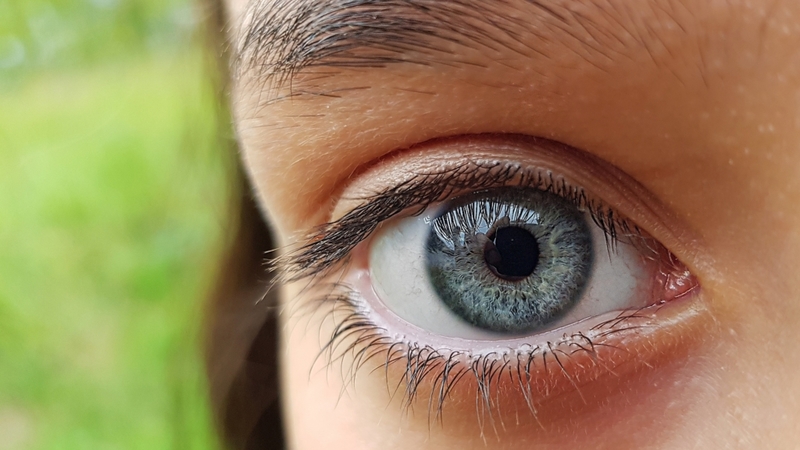
The only other two shades that are rarer than gray are red or violet, and that’s more because of conditions such as albinism, and not what many would term “natural” eye colors. As far as straight genetics go, gray eyes are the rarest, and quite lovely while we’re at it.
Ocular Albinism Does More Than Reduce Pigmentation
Did you know there are actually two types of albinism? The first is oculocutaneous albinism (OCA) – this is the version we’re all more familiar with. The other is ocular albinism. OCA is already rare, but ocular albinism is even rarer. It’s estimated that somewhere between 1 in 20,000 or 1 in 50,000 people have it. Ocular albinism primarily affects the eyes, creating very light irises.
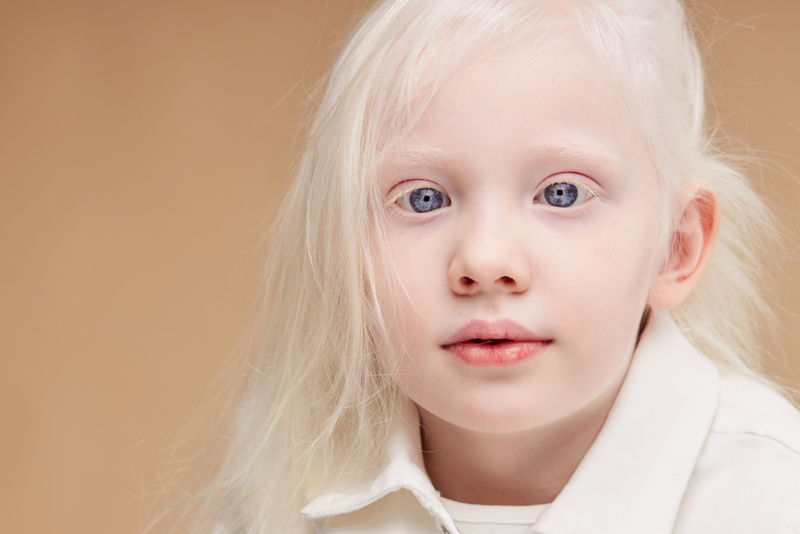
However, it also causes reduced vision strength, increased sensitivity to light, and other more serious eye conditions. Ocular albinism also affects the pigment of the skin, but it’s reduced compared to the more common, relatively, OCA.
Are You a Super Taster?
Genetics can even play a role in your taste buds. About twenty-five percent of the people in the world can be categorized as “supertasters.” These people have more visible taste papillae, which are tiny dots on the tongue. It makes them far more sensitive to certain foods, usually bitter, sweet, and salty flavors. They also tend to really dislike spicy food, for obvious reasons.
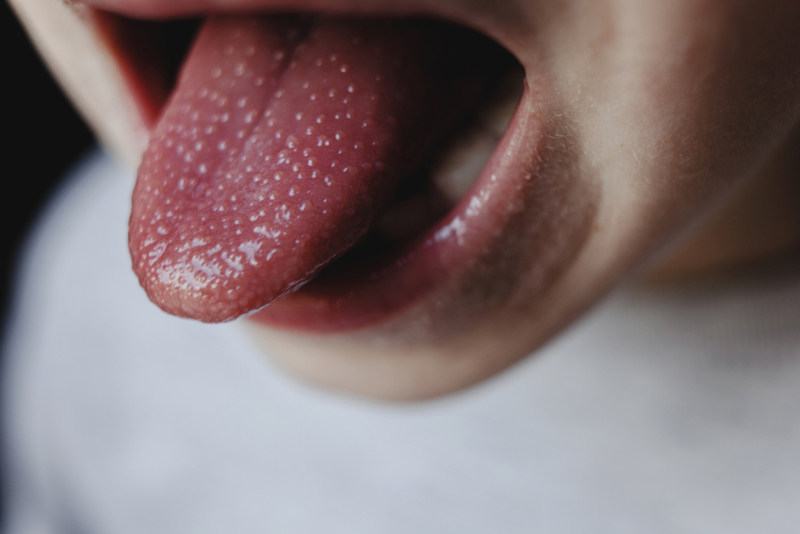
They also tend to stay away from smoking and alcohol. They dislike vegetables since they often have a bitter taste. Despite that, supertasters, especially women, tend to have superior cardiovascular profiles, according to one study. There are lots of possible reasons for this.
Outie Belly Buttons are Becoming Less Popular
Most of us have an innie belly button, but if you’re among the lucky four percent of the world, you might just have an outie. A couple of things determine whether you have an innie or outie. The first is the genetic development of the belly button itself, but it also has to do with the order your body puts on fat.

Different people develop fat in different places, down to specific cells. However, with the popularity of low-rise jeans and midriff tops, belly button plastic surgery is becoming more and more common. Still, the genetics are there, which means that trait will continue to endure.
Can’t be Wise Without Them
Once upon a time, we all needed wisdom teeth to grind up tough plants and meat material. When that third row of molars tries to break through the gums, they often don’t have enough space, which creates crowding, pain, and jaw issues. We’re sure that plenty of the people reading have had a procedure to get them removed.
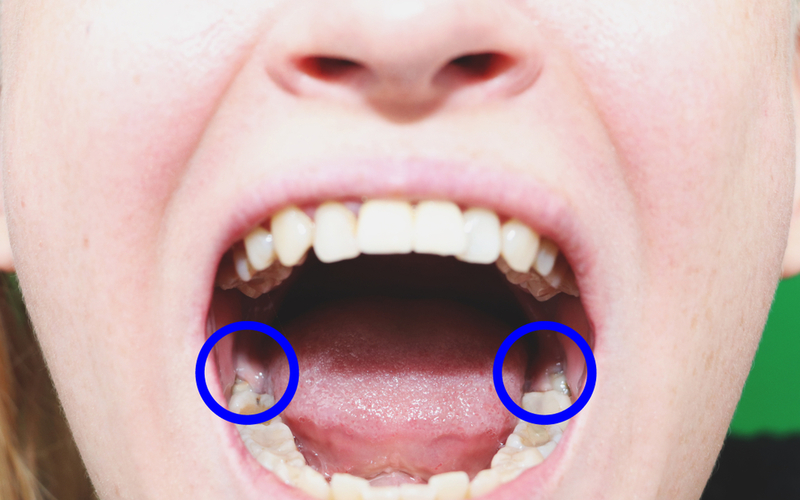
There are some people that don’t have wisdom teeth at all. An estimated thirty-five percent of humans lack these teeth for some strange reason. It’s genetics, but right now we can only guess why more than a third of humans don’t have these teeth at all. Evolution perhaps?
Stretch Out Those Eyeballs
If you’re looking for a wild party trick, check to see if you have something called globe luxation. It’s an extremely rare condition that allows your eyes to actually protrude a little from their sockets.
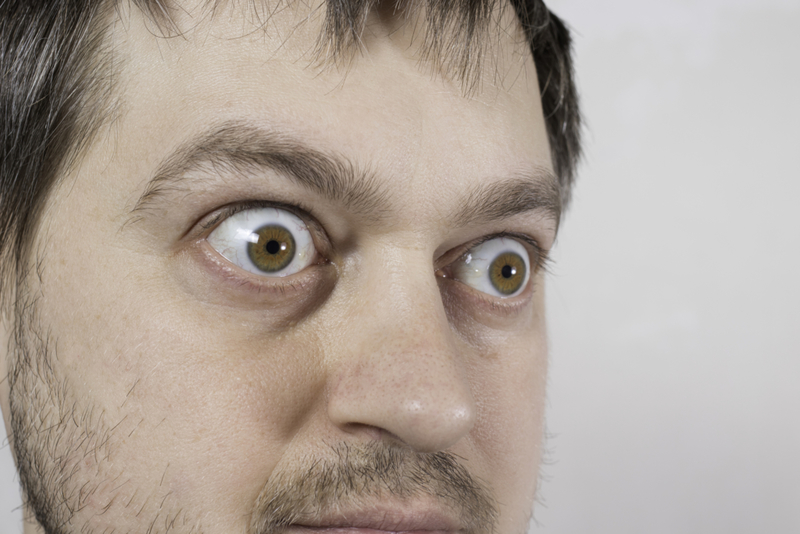
With practice and some experimentation, you should be able to pop your eyes out of their sockets a little bit. Great for grossing out nephews. This condition comes with downsides such as optic neuropathy, thyroid eye disease, and things like shallow orbit and floppy eyelid syndrome. They don’t sound like they’re any fun.
Sing Like the Best of Them
Learning you have perfect pitch doesn’t just mean you’re a good singer – it means you can mimic musical notes perfectly. Think about hearing a D minor and naming it on the spot without hesitation. Plenty of people are said to have it, but only about one in ten thousand really possess the trait.

For the others, it’s probably a combination of training and luck. Scientists are still in discussion as to whether this is a learned trait or something that is present from birth. Some have thought that with enough training, a true perfect pitch can be developed, but it takes a lifetime of work at the very least.
Survive at High Altitudes
Climbing to high altitudes makes it harder and harder to breathe. There are even heights that, should you not have the proper gear, your body will not make it. It’s generally at twenty-six thousand feet or about five miles. Certain groups, however, are able to survive at high altitudes much better.

Indigenous groups like Tibetans have had generations of adaptation to increase their red blood cell levels and other things, which allows them to survive and even flourish at high altitudes. Going from sea level to higher places, like Colorado, for instance, is considered a change, but here we are referring to extremer heights.
The Fish People of Southeast Asia
Unless we’ve been trying to increase our skills, most of us start panicking after about thirty seconds underwater. Not so for the people of the Bajau, a group of sea nomads from Southeast Asia. A study found that the Bajau, who commonly take dips in the ocean to fish, have evolved extra-large spleens that hold oxygen-rich blood cells in reserve.
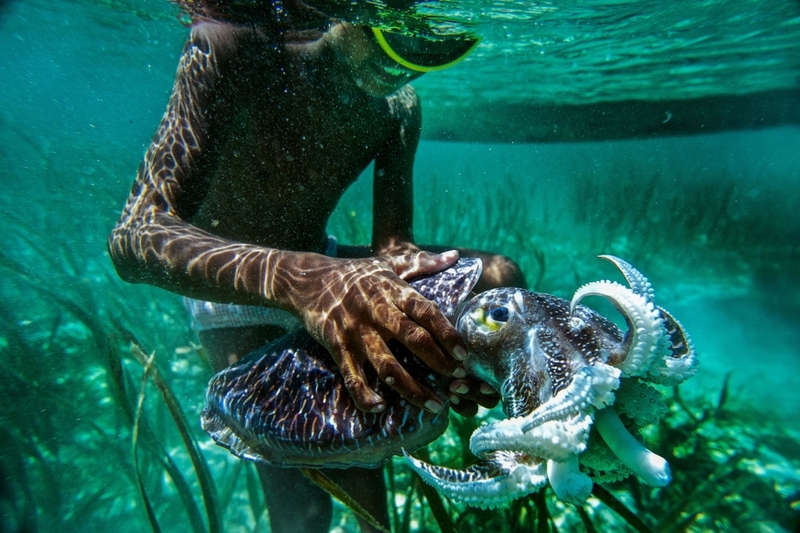
Because of this, they’re able to spend from five to ten minutes underwater without worry. A big spleen is going to help, but training yourself to spend longer and longer periods beneath the waves is going to help, too.
Never Get Lost
Some of us need directions to go to our mom’s house, but there are some who seem to have a natural ability to keep going in the right direction. History has shown us skilled explorers that have, whether genetically or through learned traits, guided people without going astray.

Researchers at the Queensland Brain Institute discovered that this useful ability is mainly attained training in the environment you’re in, and comes about slowly as your mind becomes more and more attuned to the small elements around you. Moving to a new area will, for the most part, reduce this ability.
See in the Dark with Sound
No doubt you’re aware of the ability dolphins and bats have called echolocation, which allows them to “see” using bouncing sound waves. It turns out a few rare humans also possess this ability. A blind man named Daniel Kish uses flash sonar to ride bikes, hike through wildernesses, and more.
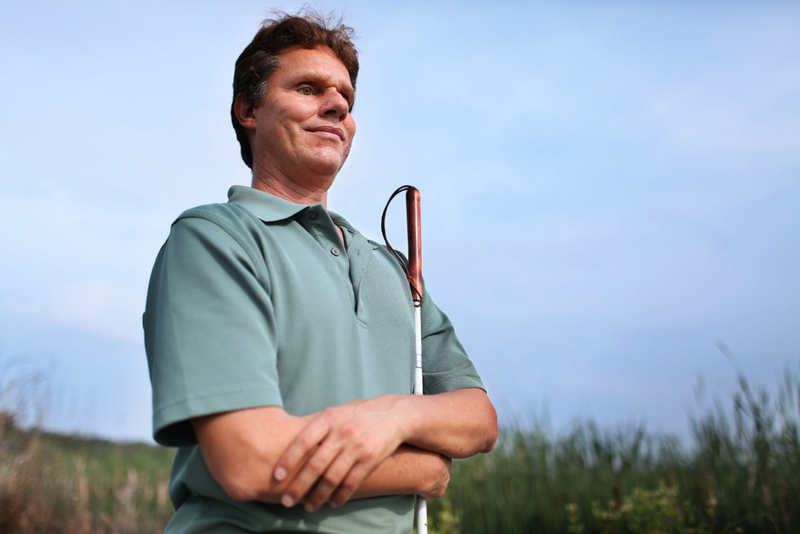
This is less a genetic trait and more something you have to learn how to do, and even then we can’t guarantee that anyone can do it. Still, if an unfortunate accident has left you sightless, you might as well try and develop this skill.
Neither Right nor Left
You probably know that ninety percent of people have a dominant right hand, at least according to the American Psychological Association. Almost all the remaining ten percent are left-handed, but there is a third category. Ambidextrous people make up, at most, one percent of people. While being able to do things with either hand can come in HANDY, there are some disadvantages as well.

For some reason, ambidextrous kids have a hard time with verbal skills, math, and reading. Also, since the handedness has something to do with the hemispheres of your brain, those who are down the middle will have greater declines in brain volume.
The Long Toe
Depending on where you live, having a second toe that is longer than your big toe might not be rare at all. It could be the norm, or statistically equal. However, one of those famous people you hear about (Meghan somebody, we think) revealed she has long second toes, which got everybody aflutter. It’s known as “Morton’s Toe,” and it’s really just a small change in where the bones of your toes are attached.
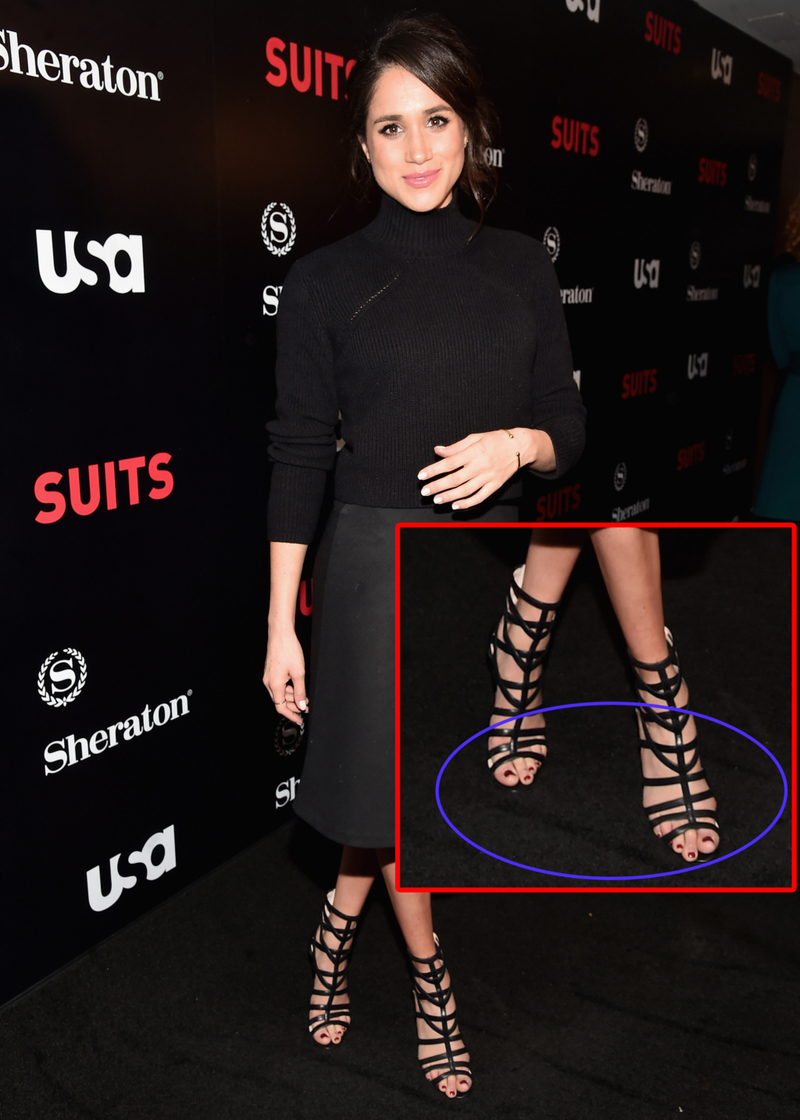
It’s also called the “Greek Toe,” with sixty-two percent of Greek men and thirty-two percent of women showing the long toe. Want to know who else exhibits this trait? None other than Lady Liberty herself in New York Harbor.
A Shock of White Hair
“Piebaldism” is a lack of melanocytes in certain areas, most commonly seen in hair follicles. It manifests as a stripe of an area of white hair, though sometimes eyebrows or even eyelashes are affected as well.
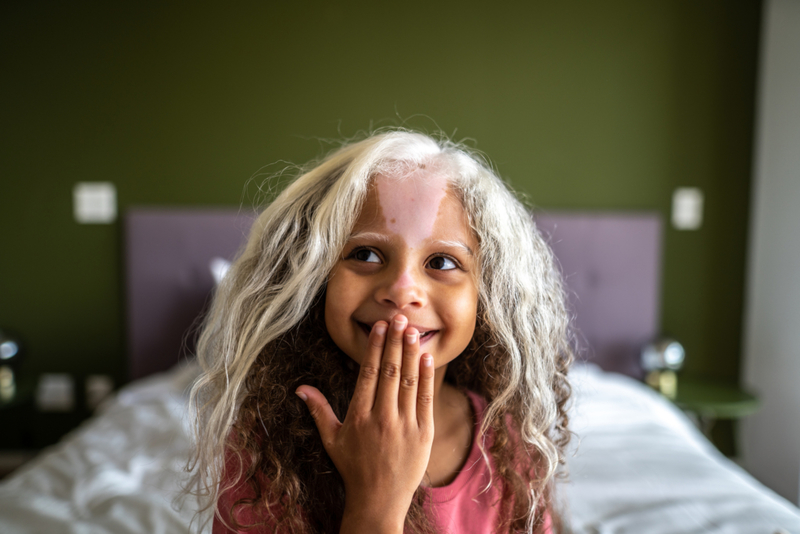
This presents at birth and continues for the rest of the person’s life, and it’s totally harmless – except for the affected areas being more susceptible to sunburns and skin conditions. Now that we think about it, that’s a pretty harmful feature. Some people may feel self-conscious, but hair dye, skin grafts, and other things are available to reduce the effects should it be the kind of thing unwanted.
When Senses Get Mixed Around
There’s a good chance you’ve heard of synesthesia, but this effect only occurs in about three to five percent of the population. People smell colors, they taste music, they feel smells, and all other manners of mixed-up signals in the sense regions of the brain.

It isn’t a mental condition – in fact, many people who have it consider it a gift. The most common version of this sensation is “grapheme-color synesthesia” which has letters or numbers become associated with colors. One hallmark of the trait is if you have it, it always manifests the same way. If the letter D is red, it will always be red.
Face Blindness Sounds Like a Horror Story
Remembering faces seems like the kind of thing that everybody can do, but some poor souls suffer from face blindness. It leaves them unable to recognize familiar people. That includes close friends, family members, and even themselves in mirrors. The term for it is prosopagnosia, and it could result from a brain condition or a stroke. Some people are also born with it.

It’s a mutation or alteration that affects the part of the brain that coordinates memory and facial perception. This is thought to occur in some way in up to two and a half percent of people, though the most intense versions of the condition are far rarer.
It’s Like if Superman Could Only Do Faces
“Super-recognizers” have an almost superhuman ability to remember and identify faces they’ve seen before. This condition was only first identified in 2009. The power of this condition is so strong it could be remembering that you saw someone at a concert or big gathering years and years ago, even if it was just for a moment.

People with this skill are highly-sought by law enforcement and private security for just this reason. There are actually tests you can take online to see if you have this ability.
The Great Cilantro Debate
For those who like cilantro, it’s a great addition to salads, guacamole, and more. For those that don’t like it, it’s vile – like eating soap. This division is caused by a specific gene that controls the sensing of odors that come from chemicals found in the plant. The gene sometimes doesn’t play fair, with fathers and sons differing on their enjoyment of the herb.

If you can’t stand the leaves of the coriander plant, one of the things you can do is crush the leaves up before eating or cooking with them, which helps to break down the chemical at the source of the bitter flavor.
One in Five Hundred
One out of every five hundred babies is born with something called polydactyly – an extra finger or toe. Sometimes it comes with no other anomalies, sometimes it comes with other issues. The extra digits can be removed surgically, but an extra finger can sometimes be a benefit. It’s a boon to manual dexterity if the studies are to be believed.
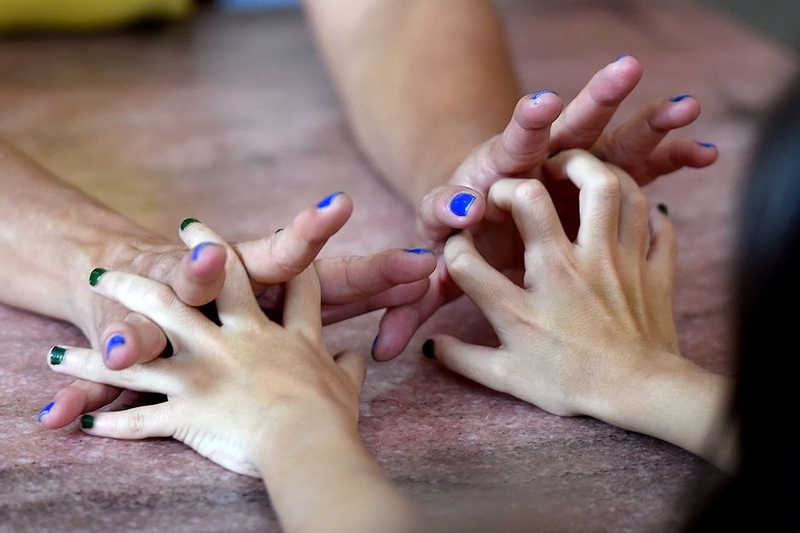
Those with six fingers could even accomplish with one hand what others do with two. They have their own muscles, tendons, and nerves. Plus, you could be the pianist from Gattaca if you train hard enough.
No Surprise Parties for These People
Have you ever heard “Jumping Frenchmen of Maine?” It’s a rare disorder for someone who has an uncontrollable reaction to being startled. A person with this condition might scream, flail their arms, jump or start a fight. Even stranger effects are repeating words, mimicking movements, or mechanically following simple commands. The symptoms begin at puberty, but slowly reduce as age progresses.

The name comes from French Canadian lumberjacks working in Maine, but the behavior has been seen in Louisiana, Malaysia, Siberia, India, and elsewhere. Researchers are unsure if it’s genetic, environmental, cultural, or what. Be careful around such people, or little jokes will become much worse.
The Worst Bad Hair Days Ever
We’ve all struggled with hair that doesn’t want to play nice, but have any of us ever had “uncombable hair syndrome?” It’s the result of genetic mutations affecting the proteins that form the hair shafts on the head. Nowhere else on the body, thankfully. The development of the hair makes it impossible to be combed flat.
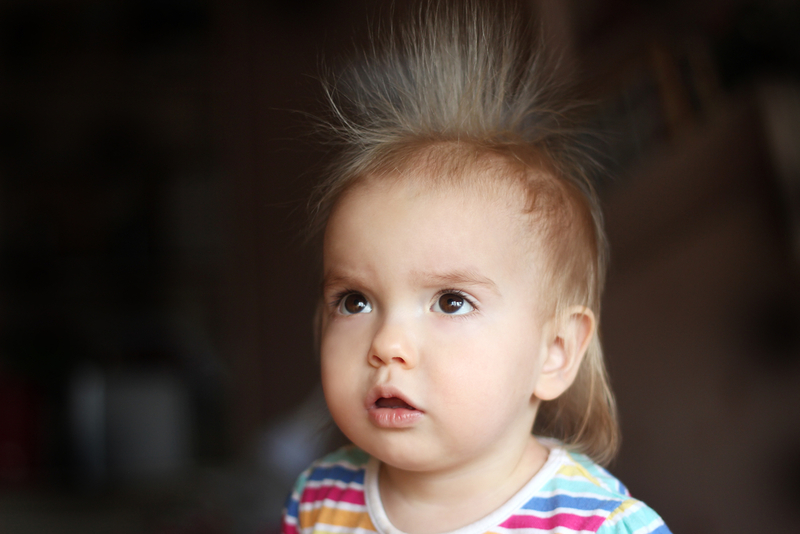
Those who are blond or straw-haired are more likely to have this than other shades, and it tends to stick out from the scalp in random directions. Luckily, there are no other health problems it and does tend to calm down with age.
Two People in One Body
A chimera is a mythical beast that is a combination of several different animals – lions, birds, dragons, snakes. They differ based on the area they’re from. Chimerism is also present in humans, though it’s a little different. It happens when a person has two sets of genomes, from when a twin is partially absorbed by the other twin in the womb.

It manifests in a variety of different ways, such as heterochromia, but true chimerism is quite rare, with only a hundred people in the world exhibiting it. Researchers believe there may be many more, but it can be difficult to determine.
Super Strong Children
For most of us, getting big and strong requires working out the right way, eating the right food, and a bunch of other things. Sleep is a big one. For people who have inactive myostatin genes, however, it requires nothing at all. Well documented in mice and cattle, children who have this mutation are born swole, possessing bigger muscles and greater strength.

There hasn’t been a great deal of research done on the condition, but so far there are no long-term health issues associated with it. People with this condition also tend to have reduced body fat, though increased muscular strength isn’t always part of the deal.
The Stinkiest Mutation
We can all get a stink about ourselves when we’re working hard or spending time in the heat. A small number of people, however, are doomed to emit a constant, unpleasant smell. There’s an enzyme in the body responsible for breaking down the chemical trimethylaminuria, which comes from digesting eggs, beans, and fish – some really stinky foods.

A mutated FMO3 gene prevents the enzyme from being produced which results in someone suffering from a strong, noticeable body odor that people have called similar to rotting fish. It’s a rare occurrence, happening in less than one percent of the population. Thankfully.
Want More Hair? You Got It
For most people, having hair on their heads, chins, chests, and maybe legs is good enough. For people with Ambras syndrome, they’re going to have much more. It can potentially cause hair all over their bodies, but each person usually has it isolated to certain places. It can, however, cover them from head to toe, which is known as hypertrichosis, or “werewolf syndrome.”
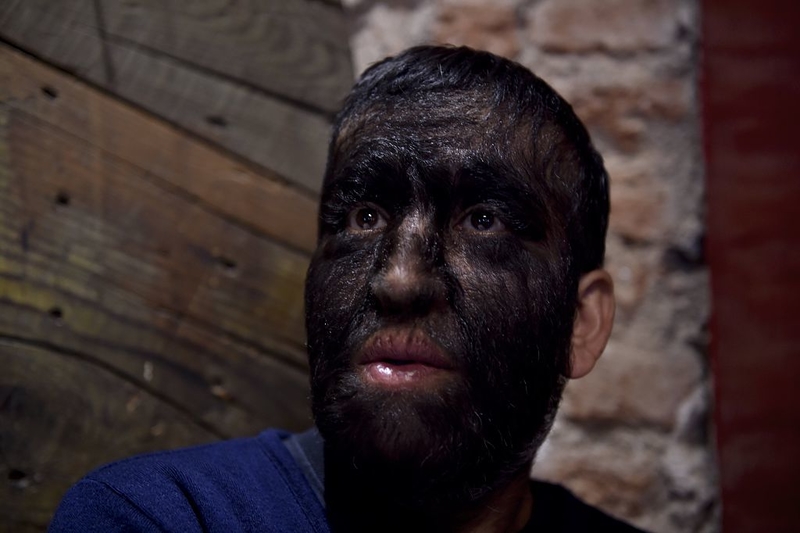
The syndrome is quite rare – it has affected only about fifty people since the Middle Ages. The responsible gene behind this one is TRPS1, a mutation that disrupts messages sent to cells developing follicles.
Gut Fermentation Syndrome
None of us like to be hungover, even if it was for a good reason. But people who have Auto-brewery syndrome, otherwise known as gut fermentation syndrome, will always be hungover. Sometimes it takes a little bit of alcohol, sometimes it takes none at all.

The syndrome occurs when your gut produces an excess of saccharomyces cerevisiae, which is a form of yeast. The yeast then sits in the GI tract, which will ferment things and produce ethanol, a form of alcohol. As you might expect, this leads to the absorption of that alcohol, and constantly being drunk or hungover.
Kinda Like Something out of a Lovecraft Story
Ectrodactyly is famously known as “lobster claw hand” or “split hand malformation,” and we bet you can figure out why. Individuals with this disorder have a cleft where their middle toes or fingers should be, meaning they’ll only have the outermost toes or fingers, though there is some variance in how it manifests.
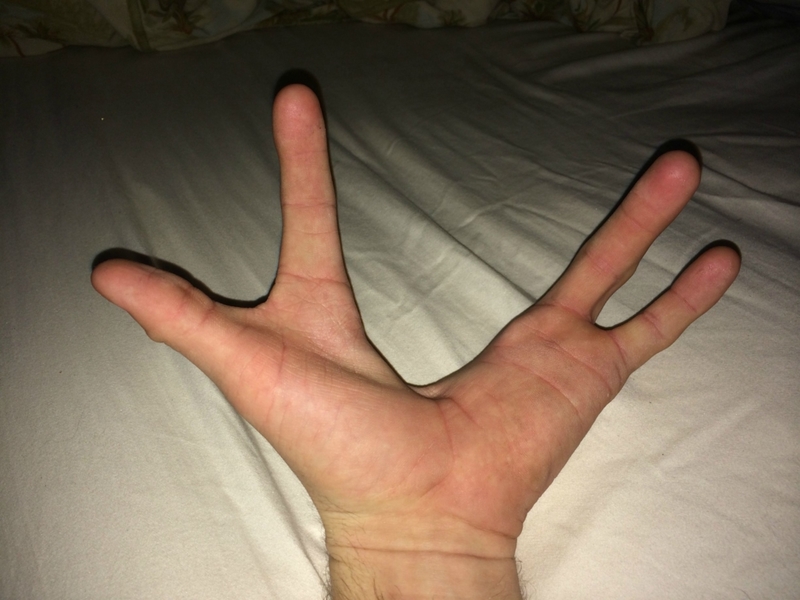
There are a number of ways for this disorder to appear, though it’s always through some change in chromosome seven. While the disorder will likely affect people their entire lives unless they undergo many surgeries, there are some people who have not only prospered but become famous, such as chess players, actresses, and athletes.
More Limbs Than Normal
For a really high percentage of people, the number of limbs is four. Two arms, two legs. That’s pretty much how it goes with mammals. Polymelia, however, bucks the trend and can add more. It’s a birth defect that is said to be the result of an improperly-absorbed twin.
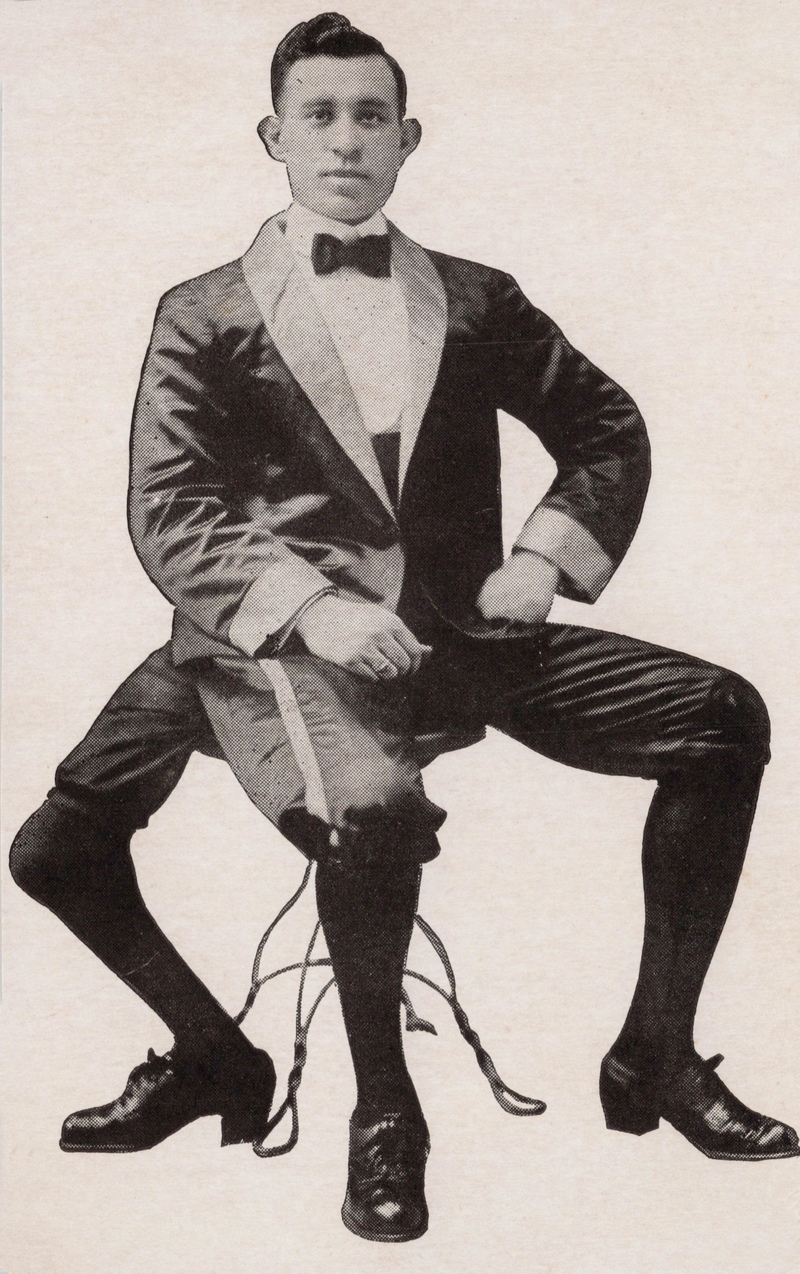
It’s often found in animals, and conjoined twins are a form of this defect, which results from an absorption that is even less complete. The additional limbs are often shrunken, deformed, and unable to be of use. It’s also possible that one or more genes have gone through a mutation, resulting in an additional limb.
It’s Not a Disability
Due to an extremely rare development in the womb, Wang Fang, born in China, has feet that are turned a hundred and eighty degrees on her ankles. However, she refuses to call it a disability. She can run just as fast as her friends and hold a regular job as a waitress.
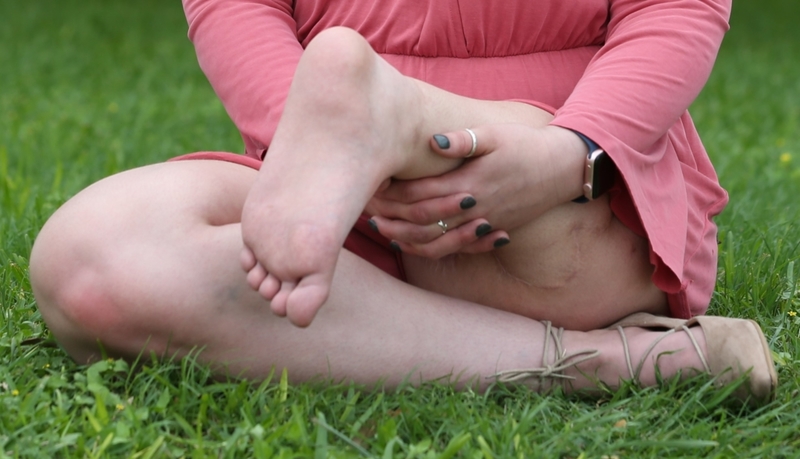
Other than putting her shoes on backward, there’s really nothing wrong with her. It was feared she wouldn’t be able to walk properly when she was born, but it turns out she doesn’t have any other side effects, which must be a one-in-a-trillion chance.
Walking on All Fours
It’s possible that only one family in the entire world suffers from this peculiar disorder. Uner Tan syndrome is named after the evolutionary biologist who first studied it, finding it in a single-family in rural Turkey.

The condition is, even by neurological conditions, quite strange. Individuals who suffer from it walk like quadrupeds – on all fours. They also use primitive speech and have a congenital brain impairment, which includes something called “disturbed conscious experience.” Tan believes that the condition is due to some sort of backward stage of human evolution, but other experts aren’t convinced that genetics has everything to do with it.
Hey, No Clipping Needed
Anonychia congenita is a rare disorder that takes place during formation, in which a person’s toes or fingers don’t develop nails at the end. It’s such a small change, but just imagine having toes or fingers that don’t have nails. You’ll feel so strange.
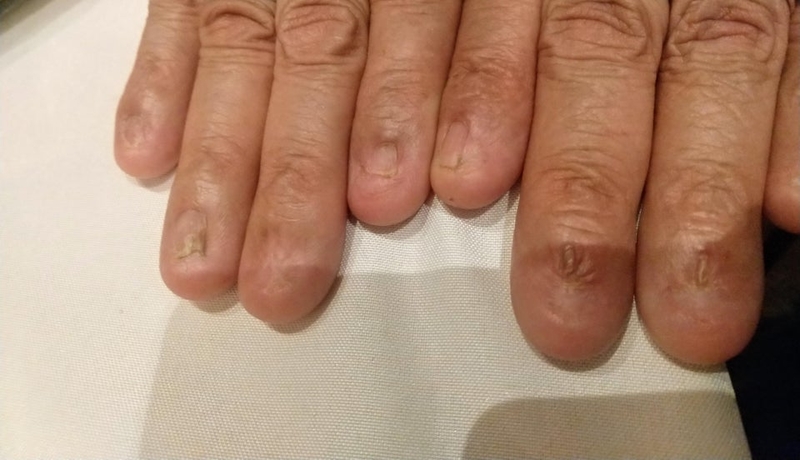
It doesn’t seem too bad all things considered, and as far as we can tell it doesn’t come with any other effects. It could be due to a number of things, including infection, trauma, skin diseases, and even plain old genetics. Not only can people have no nail, but they can also have just part of a nail.
Elf? Vulcan? You Decide
Stahl’s Ear is known by a number of other names. It’s been called Satiro’s ear, Vulcan or Spock ear, and elf ear. It’s a development of an extra cartilage fold in the ear, which gives it a natural pointed shape.
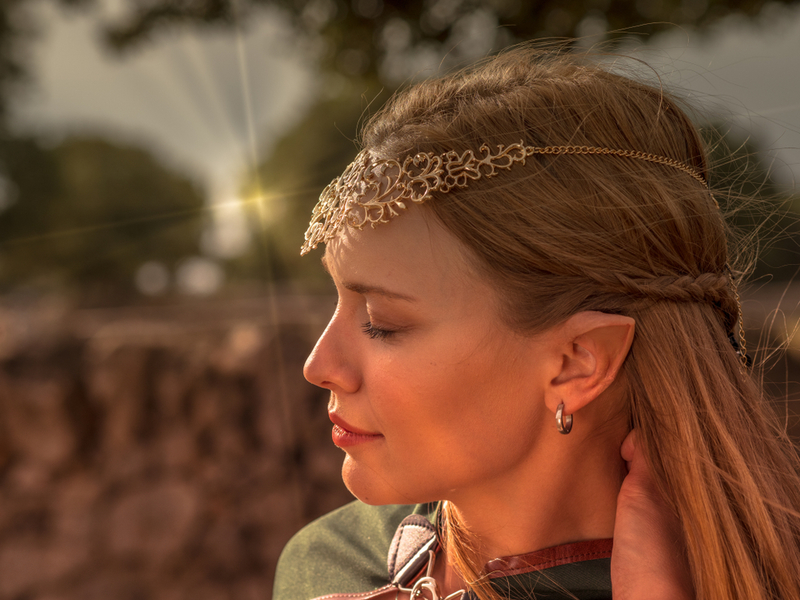
Thankfully, the extra fold and different shape haven’t presented any other changes – not even with hearing. However, many parents still chose to have the ear reshaped in order to, perhaps, reduce possible future teasing. This can be done with a simple mold if it presents young enough, or an outpatient procedure if the child is older. If they don’t get it corrected, the kid will save tons on costume supplies.
An Eyeball Scar
A corneal scar happens when the cornea of your eye, typically transparent and clear, has an opacity or irregularity that blocks light. Not all scars affect vision, but many of them can mean a significant loss of vision.
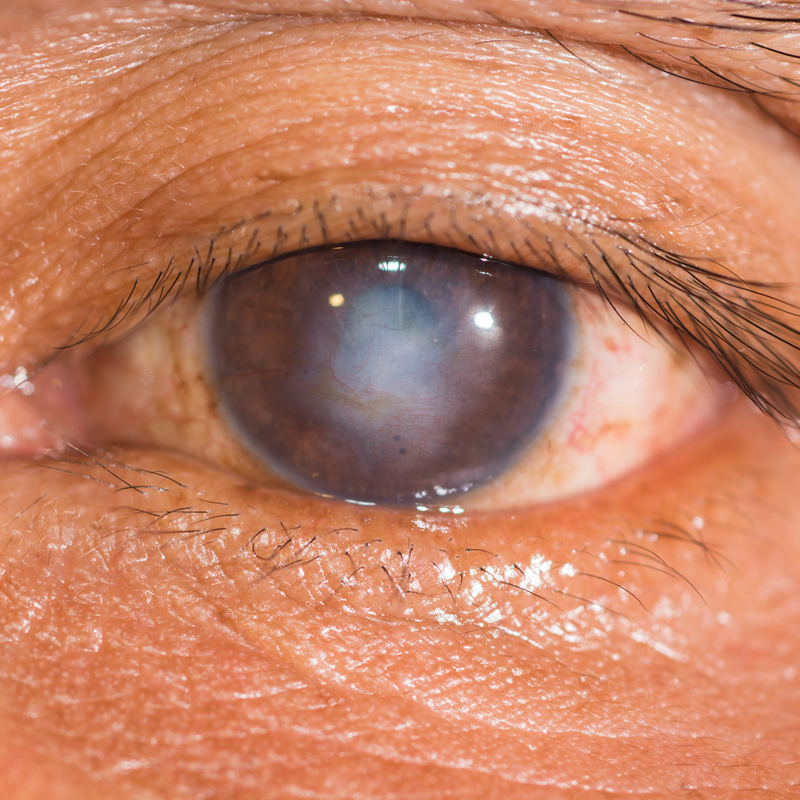
These scars can develop because of injury or trauma, infections, or eye diseases, and have numerous effects like pain, swelling, and the constant feeling that something is in your eye. Which sounds like torture. Corneal scars may not change over time, or they may worsen due to an underlying disease. Milder scars may only require glasses to correct the vision, but more serious scars have a number of treatments available to mitigate or remove the damage.
They Get a Slight Advantage While Swimming
This is one of the more common traits on this list – it’s likely someone you know has this feature, as it develops in one in two thousand live births. Webbed toes present most commonly as a connection between the second and third toes, with skin that extends higher. It can sometimes reach all the way to the end.
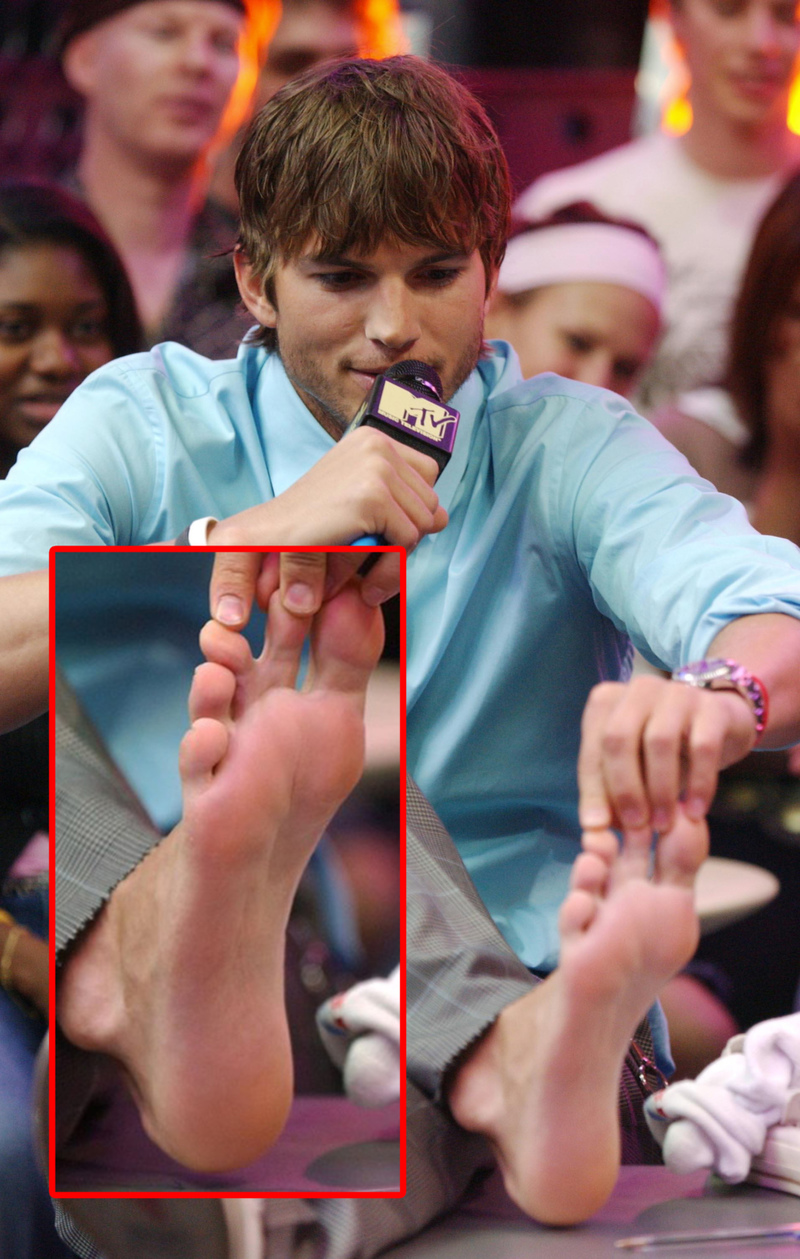
The specific cause of this condition is still a mystery. There is clearly some genetic component, as close family members can share the trait, but there are a number of possible reasons. If you have this condition, don’t feel bad – Ashton Kutcher also has it.
Being Born Without a Bridge in the Nose
We all know that the bridge of the nose is the bony area, actually cartilage, that gives our nose shape. Some people have a low bridge, but others are bone without that cartilage at all. This is actually relatively common for people of Asian or African descent – or at least less rare.
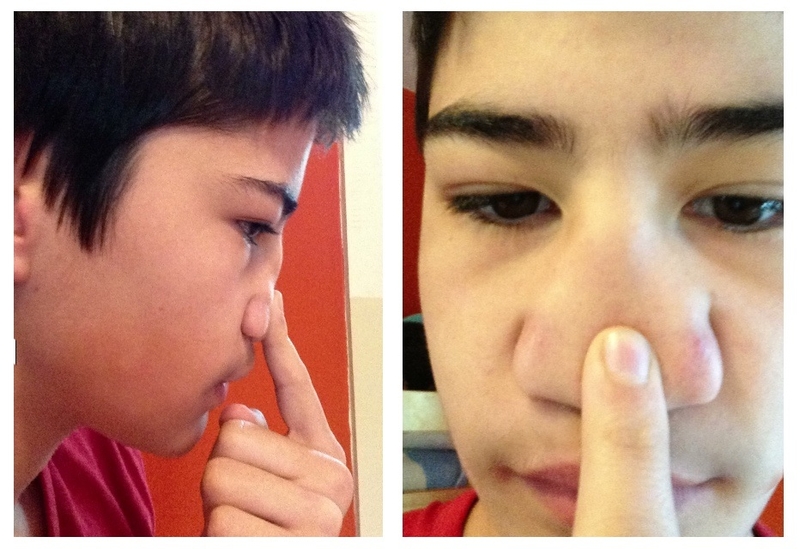
The condition typically doesn’t impair breathing, though a small amount of plastic surgery may be recommended to ensure proper airflow. Other than genetics, this can be due to genetic disorders, birth defects, or even infectious diseases.
Hey, Pull My Finger
Trigger finger is a little different than what you might think it is. It’s a condition that occurs when one of your fingers is stuck in a bent or straightened position, known as stenosing tenosynovitis. It happens when inflammation shrinks the space within the sheath that wraps around the tendon in the affected finger.
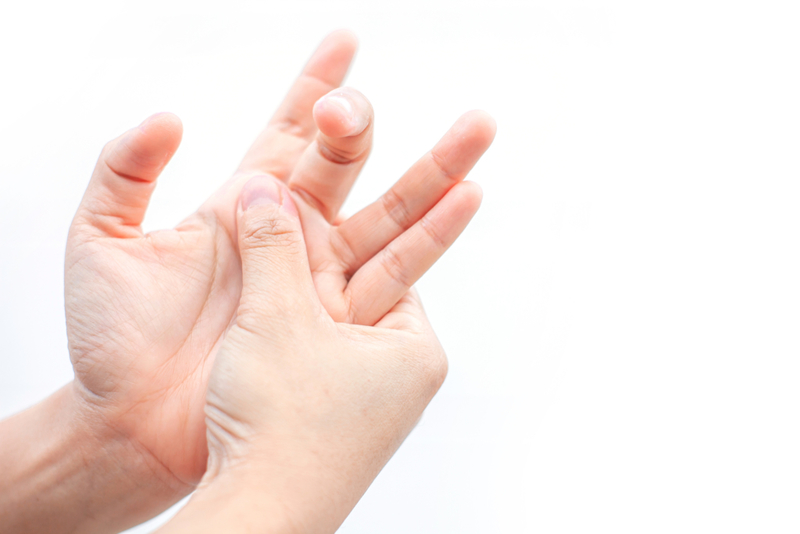
The condition can happen often with people whose work or hobbies require repetitive gripping motions. It’s also more likely to occur in women, and in people with diabetes. The treatment of this condition varies depending on the severity, ranging from inflammation-reduction to surgery.
A Singular Palmar Crease
Known as a simian crease (because it looks like a monkey might have it, we guess?), having one long crease across your palm is the result of the fusion of the two main palmar creases — the heart line and the head line. It’s often found in people with a few abnormal medical conditions, but otherwise, perfectly healthy people can also develop it.
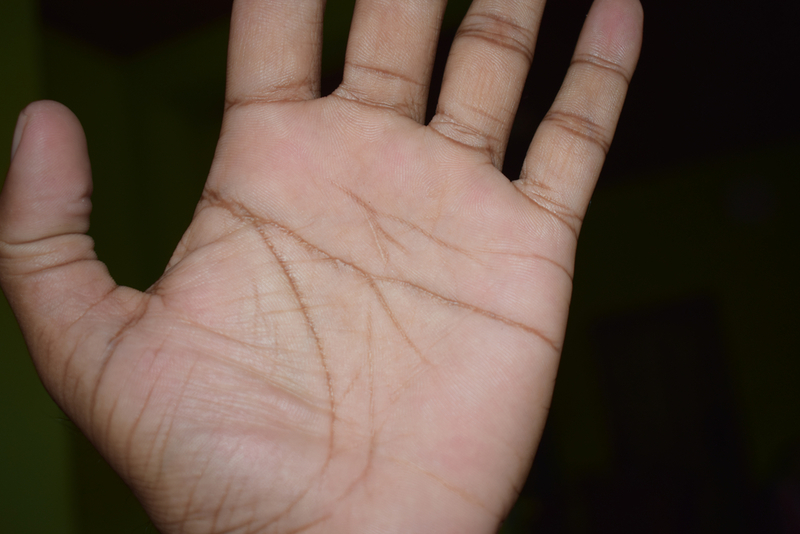
About 1.5% of the population has it in at least one hand. It’s now known in the scientific community as the single transverse palmar crease. The most likely cause of this is fetal hand movement since the crease develops during the second month of pregnancy.
You’ve Heard of Being Left-Handed
How about being right-hearted? This rare condition forms the heart on the right side of the chest, and it’s called dextrocardia. There are a few versions of the condition. The first is dextrocardia of embryonic arrest, which moves the heart further right than normal, and is associated with many heart defects.

Then there is dextrocardia situs solitus, with the heart on the right side of the chest but everything else is normal. Dextrocardia situs inversus has the heart being mirrored on the right side. There are more still. Surprisingly, most of these versions of the disorder don’t present a big list of problems. About one in every twelve-thousand people develop this condition.
This Little Spider Went to Market
Fittingly called “spider fingers,” arachnodactyly is a condition that makes fingers and toes abnormally long and slender in comparison to the rest of the hand and foot. People with this disorder also have thumbs that are pulled inwards toward the palm.

People with this condition usually have no other health conditions, but it can sometimes become linked to Marfan syndrome, Ehlers-Danlos syndromes, and more. It’s possible that famous Russian composer and pianist Sergei Rachmaninoff had this condition or Marfan’s syndrome. The condition has been linked to mutations in both the fibrillin-1 and fibrillin-2 genes.
It Kind of Looks Like a Map
A port-wine stain, as long as it isn’t an unfortunate end to a party, is also discoloration of the skin caused by a vascular anomaly, named because it’s similar to the color of Port wine. A port-wine stain most commonly appears on the face but could appear anywhere on the skin, with the neck, upper trunk, arms, and legs also being common.

They start out pink, but will often darken into red or purplish colors. While usually harmless, they can be removed to reduce potential problems or bullying. The last leader of the Soviet Union, Mikhail Gorbachev, had a prominent port-wine stain on his forehead.
Hair That Spins Both Ways
All of us have a whorl in our hair that helps determine how the follicles lie, which side is better to part on, etc. About seventy-five percent of people have clockwise whorls, while eleven percent have a counter-clockwise pattern. For the rest, there are increasingly rare options, including the double whorl, which is present in about five percent of people.
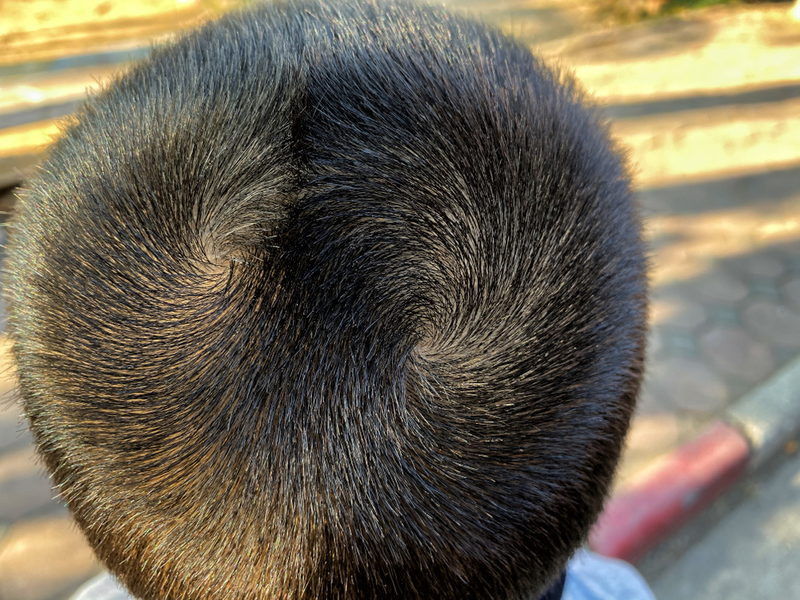
Old wives’ tales say that it means a person is more intelligent, will develop a certain health problem, or any number of other things. However, there’s no evidence to suggest any of these are true, not even the one about people with a double-whorl going bald faster.
Read the Writing on the Skin
Dermatographic urticaria is a skin disorder that affects anywhere from two to five percent of the population. It manifests with an allergic-like reaction, raising a red wheal on the skin when scratched or otherwise affected. It can be caused by a number of different things, from a higher number of histamine being released in the body to tight clothing or diet.

Usually, this condition is of no issue other than a neat party trick, but sometimes itchy red welts can last for anywhere from hours to days. Thankfully, that intensity is as rare as the condition itself.
Art Out of Pain
These cool treelike figures on the skin look like neat tattoos, but they’re actually the result of people being hit by lightning, called Lichtenberg figures. No doubt you noticed the similarity.
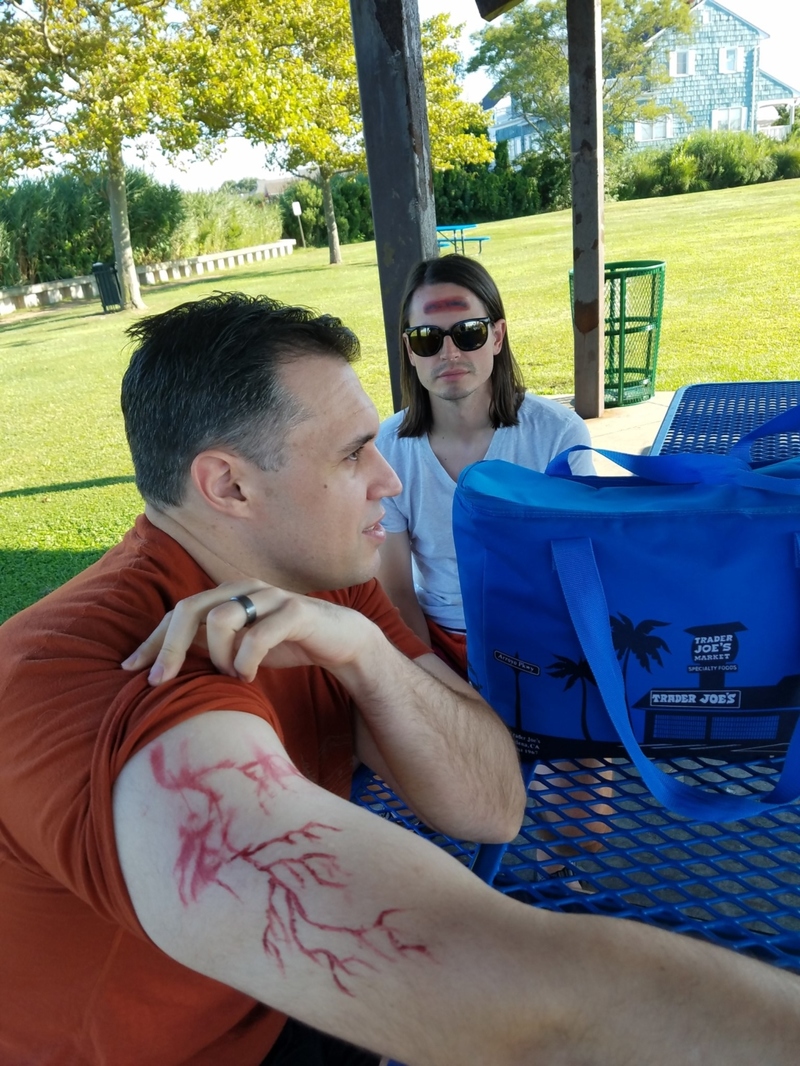
The branching electrical pattern happens when an electrically insulating material receives a high enough voltage to become an electrical conductor. It’s hard to get a higher voltage than a lightning bolt. People who have been struck require lengthy hospital stays and plenty of work to recuperate, but they also get these scars – though they usually disappear after about twenty-four hours. A lightning bolt itself is a naturally-occurring three-dimensional Lichtenberg figure.
Those Simple Little Dots
It’s hard to argue that freckles aren’t at least a little cute, but you may be surprised to learn that they, too, are the result of mutations. Partially, anyway. It has to do with melanocytes — the cells in the skin that make pigment.
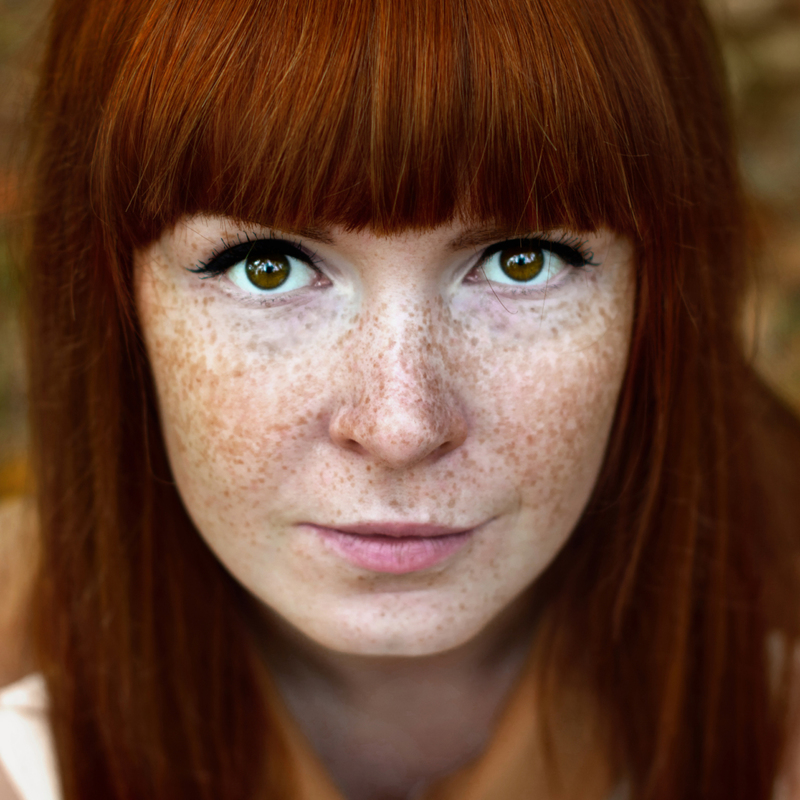
When exposed to UV light, they produce melanin, which makes skin darker to protect us. When the gene MC1R isn’t working properly, freckles are created instead of a tan after time in the sun. Another version of this gene is responsible for red hair, which is why it’s so common for those with red hair to have plenty of freckles, too.
A Split in the Jaw
A cleft chin is actually a slight mishap during development, but seeing as how it doesn’t present any problems, you’d likely never know. Not all cleft chins are exactly the same, but they all happen the same way – when the two halves of the jaw bone, or the muscle, don’t fuse properly.
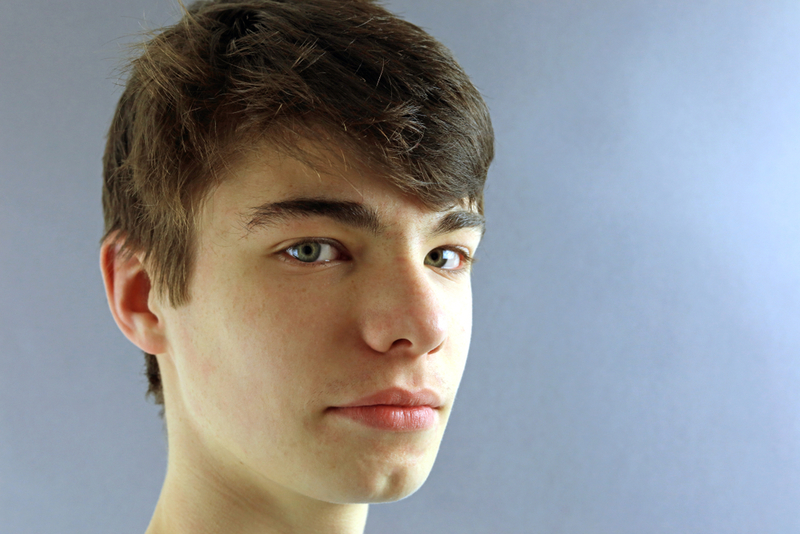
Men are more frequently cleft-chinned than women at an almost two-to-one ratio due to the jaw sizes. Cleft chins are common but not a dominant trait. Even if two parents have perfectly round chins, there’s still a chance a child could have a cleft chin.
No Milk for You
In any moderate group of people, there’s a pretty good chance that someone is lactose intolerant. Lactose intolerance is found all over since it’s an evolutionary trait. Before we cultivated animal milk to drink we were weaned off after a year or two. It’s especially common in East Asia and China.

Of course, the trait doesn’t mean that every child someone with LI has will also have it – there are plenty of siblings who don’t share it. For some reason, people from northern Europe have much lower LI rates than the rest of the world.
Your Genetics Give You a Sweet Tooth
Thanks to 23andMe, the company that allowed you to look into your family genetics, people have discovered lots of things about themselves. One of those things is Europeans have a huge preference for sweet foods compared to the rest of the world.

There’s a clear reason for this — since sugar has lots of calories, and during most of the history of the world, that was something you needed as much as possible. There’s still plenty of personal preference at work here, but Europeans have a much higher chance of loving their sweet treats.
What if You Love Salty Foods?
It turns out your genetics have a lot to do with what kind of foods you like to eat. People of East Asian descent have a tendency to enjoy salty foods a lot more than the rest of the world.

While it’s fully possible this has to do with the genetics of a person (tongues, taste buds, etc), it’s also just as possible that the kind of food you eat while you’re a child informs what kind of food you like. It’s the classic nature versus nurture debate, but it’s clear that the part of the world your genetics hail from at least does part of it.
Eye Color Based on Region of the World
Eye color is the kind of thing that high school students use to learn about genetics, so you’d think it’s one of the simpler elements. On the other hand, it turns out the science behind eye color is pretty fascinating.
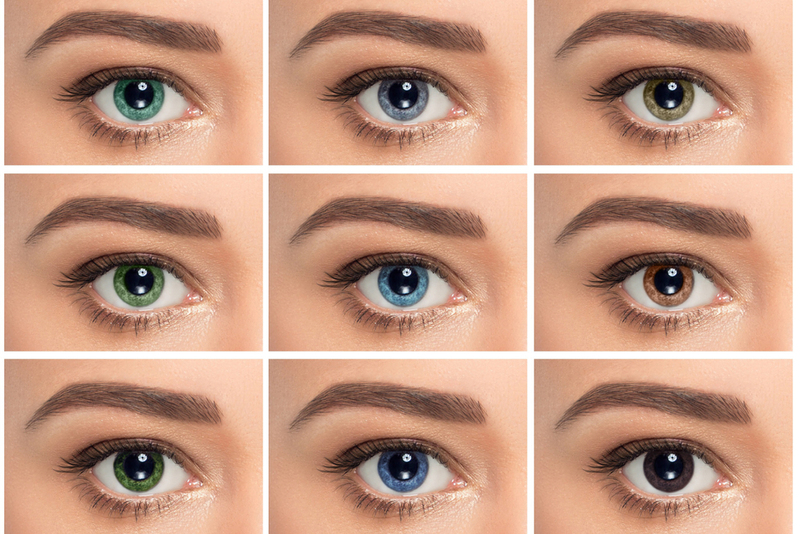
Your eye color is a way to tell people what area of the world you’re from. It goes even further than just “dark,” or “blue,” since the specific shade can tie you to East Asia, Africa, the Middle East, and or all over the world. Certain genetic variants pop up from each of the areas. It’s easiest to do this with the darker shades of iris.
The Genes That Make You Fast
If you want split-second speed, you need fast-twitch muscle fibers. Fast-twitch muscle fibers come from the protein alpha-actinin-3, which is created thanks to the ACTN3 gene. One or both of these genes can be defective in people – in fact, eighteen percent of us have inherited two defective copies, which makes it harder to build muscle.

A number of elite sprinters and super-strong powerlifters, on the other hand, have two working versions of the gene, and thus develop fast-twitch muscle fibers at a higher rate. Don’t be fooled, though – there’s still plenty of training involved.
The Gene That Protects Against Malaria
Malaria is incredibly dangerous, but there are some people that are protected against it thanks to their genes. Blood disorders are never the best thing for people, but one gene-caused condition at least does a good thing.

Those that have one sickle gene and one normal hemoglobin gene are more protected against malaria. While that does mean they’re carriers for sickle-cell disease, it also means they’re safer in some ways. This reveal could help develop malaria treatments in the future, potentially saving millions of lives.
Embarrassing Genetics
When you’re out drinking with your friends, do you start to get a rosy hue after just one glass? Your genetics is to blame. Specifically, a mutation on the ALDH2 gene.

A certain defect interferes with the liver to convert an alcohol byproduct – acetaldehyde – into its next form. Instead, the acetaldehyde builds up in the blood and causes the capillaries to expand, increasing the blood flow and making you blush. That might not seem too bad, but acetaldehyde is a carcinogen, so tread with caution. One possible way to avoid the downsides is to reduce drinking.
Time to Be Big
Elisany da Cruz Silva is a towering six-foot-eight. In Brazil where she’s from, she’s head, shoulders, and torso above all other women and quite a number of men, including her partner. This one-of-a-kind model has a dangerous form of gigantism, which began with a pituitary gland problem.

There are numerous versions of this condition, and while they all come with issues (Silva is certainly going to need to be careful with her joints) they also can do something like this, and make you big and beautiful. You might have to get used to stares, however, which is something Elisany definitely had to deal with.
Giving People the Bowie Eye
You might know the story about how famous rocker David Bowie had a permanently-enlarged pupil thanks to a teenage injury, but there are plenty of others who have such a condition, too. It’s called anisocoria, and it affects up to twenty percent of the population.

Nine times out of ten, or even more often, it’s perfectly harmless. Versions range from physiological anisocoria, which is the most common and results in a one-millimeter difference, to mechanical anisocoria or oculomotor nerve palsy, which are more visible, and can come with other issues. Migraines are also a known factor, though not for everybody.
Bridging the Gap
Diastema is a body feature you very well could have. It’s the scientific term for having a gap between two teeth, most commonly the front incisors. It’s most common in children, due to an imbalance between the size of the jaw and the teeth. There are plenty of other factors, however, including genetics, development, and luck.

If you have this feature, you’re not alone. Actors and actresses, musicians and singers, athletes, comedians, and even professional wrestlers have sported the gap and gone on to fame and fortune. Even Geoffrey Chaucer wrote about the “gap-toothed wife of Bath” in his legendary book “The Canterbury Tales.”
Getting the Feline Look
Occurring in only one out of every seventy-four thousand people, cat eye syndrome doesn’t just affect the pupils. It’s a developmental disease that affects a lot of the body, but the most striking symptom is the elongated shape of the pupils, which can often look like the slitted pupils of a cat.

Not all eyes change in this manner, and there are many who have the disorder who don’t have abnormal pupils at all. The condition is caused by additional copies of chromosome 22. People with the disorder can have one or two additional copies. The disorder was first documented in 1899, and the cause was discovered in 1965.
Changing Color in the Cold
We all lose a little bit of color in the cold thanks to blood moving away from our extremities and toward our important organs, but people with Reynaud’s syndrome have it a little worse. It’s when the spasm of small arteries causes episodes of reduced blood flow to end arterioles.
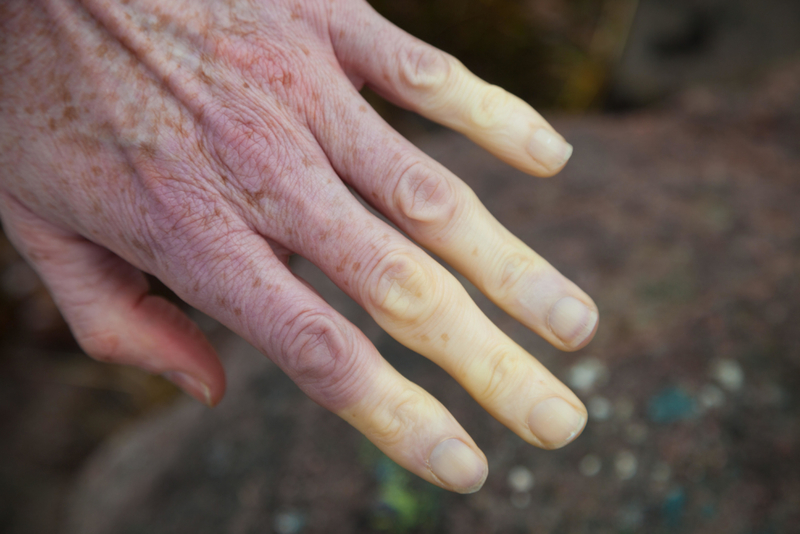
It’s typically the fingers that are affected, and sometimes the toes. In rare cases, the nose, ears, or lips are affected. While the cold is a big part of this happening, other causes include smoking, certain medications, and thyroid problems. About four percent of people suffer from some form of the disorder, and it’s more prevalent in women.
Time to Stretch Yourself
Ehlers Danlos syndromes are a group of thirteen genetic connective-tissue disorders. One of the more common symptoms of these disorders is something called skin elasticity. Weak connective tissue creates skin that is incredibly stretchy or velvety soft. It’s often quite thin and heals with abnormal scars.
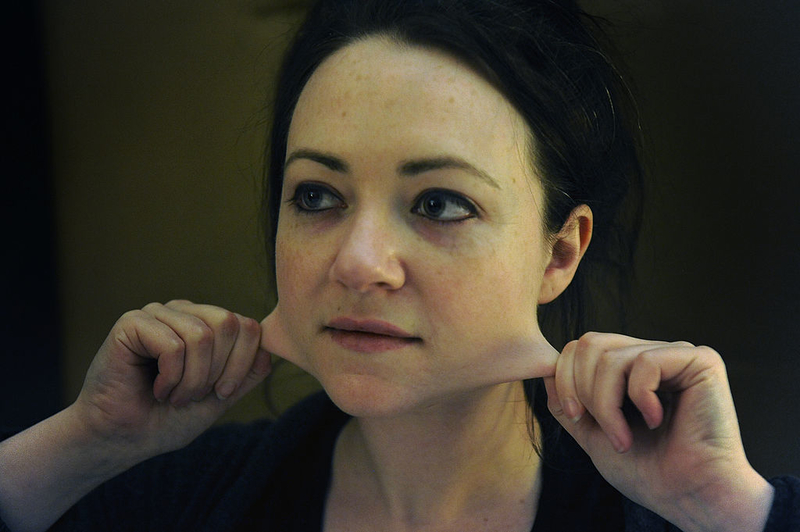
Some people with these disorders can stretch their skin out to absurd degrees, including doing things like putting their neck folds into their mouths or taking the tight skin of their arm and creating something that looks like a canvas. These disorders include plenty of other symptoms, and this one isn’t all good, but it can still be a bit of fun.
The Speck in Your Eye
As our eyes develop, the remnants of a fetal membrane can persist inside the pupil, creating something called a persistent pupillary membrane, or PPM. It was originally present to provide blood to the lens for proper nutrients, but after birth, it serves little purpose.
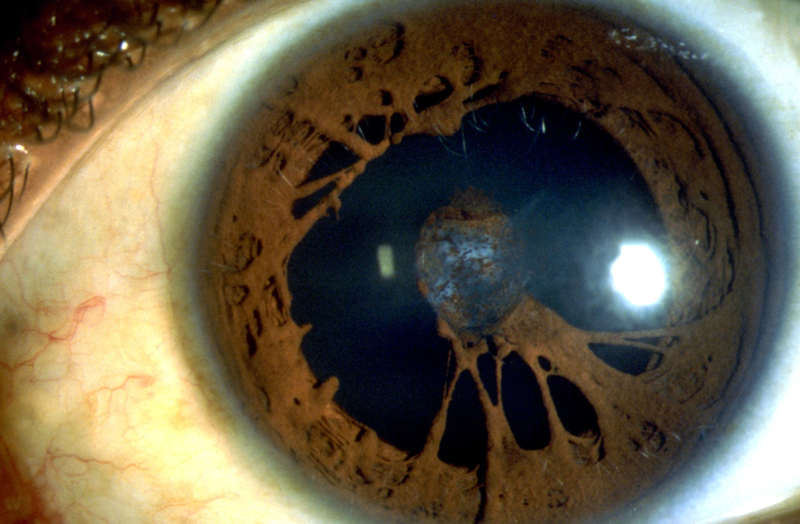
A PPM causes when the membrane does not properly atrophy, but symptoms are rare, and even those with them lose them before reaching adulthood. Though some small effects may occur, minor treatments and rare surgeries will remove it entirely. In the meantime, it looks like a creature out of space.
That Dangly Thing, as Cardi B Calls It
We all have a uvula – that bit of flesh in the back of the mouth that dangles down. It’s a helpful little bit for producing saliva, blocking nasal cavities while swallowing, and is also part of the gag reflex, which – while unpleasant – does a lot of good work for us.
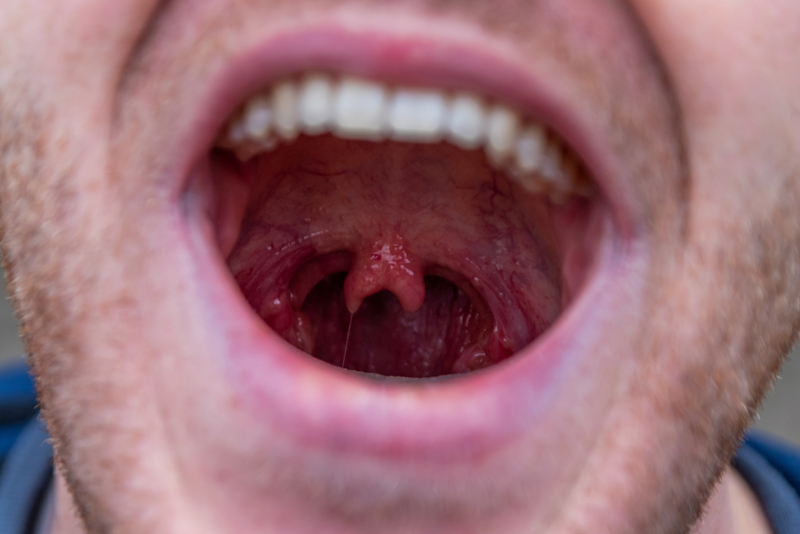
Some people have a uvula that is split, called a bifid uvula. This sort of disorder is connected to middle ear infections (no fun) and food being able to enter the nasal cavity while swallowing (no fun). However, the population at large only presents this about two percent of the time.
Two Thumbs Way, Way Up
We’ve all delivered a crisp thumbs up to someone who did a good job, but people with triphalangeal thumb do it better than most. It’s a congenital malformation where the thumb has three phalanges (bones) instead of two. The extra bone can vary in size from a pebble, all the way to being compared to other fingers’ bones.
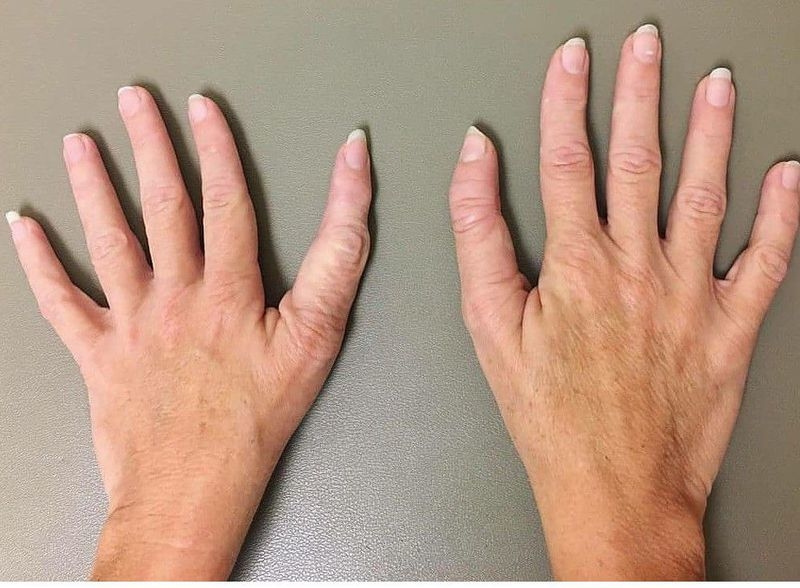
This seems like a great thing, but the affected thumbs often have mobility issues, and sometimes aren’t even opposable. The condition seems to be primarily genetic, though the direct cause isn’t yet known. It occurs in one out of every twenty-five thousand births.
Seeing Double
You’ve heard of the condition strabismus before, but you’ve probably heard of it by the name of being cross-eyed. Whether only sometimes or constantly, people who are cross-eyed have trouble focusing both eyes on one place. It can be the result of muscle dysfunction, farsightedness, problems in the brain, or even infections or trauma. It’s also thought to have a genetic factor.

Strabismus occurs in about two percent of children, and there are various treatment types depending on the intensity, including simple glasses or surgery. Related is something called “Wall-eye” where the eyes look away from each other. Both disorders fall under the strabismus umbrella.
Hairless From Head to Toe
It’s a sad fact of life that most people will have some hair loss. Even women will lose their mane volume over time. Alopecia Universalis, however, is that turned up to eleven. It’s a complete lack of hair on the entire body – head, eyebrows, beard, chest, arms, legs, back, everywhere. However, people who have this disorder are otherwise completely healthy with no other symptoms.
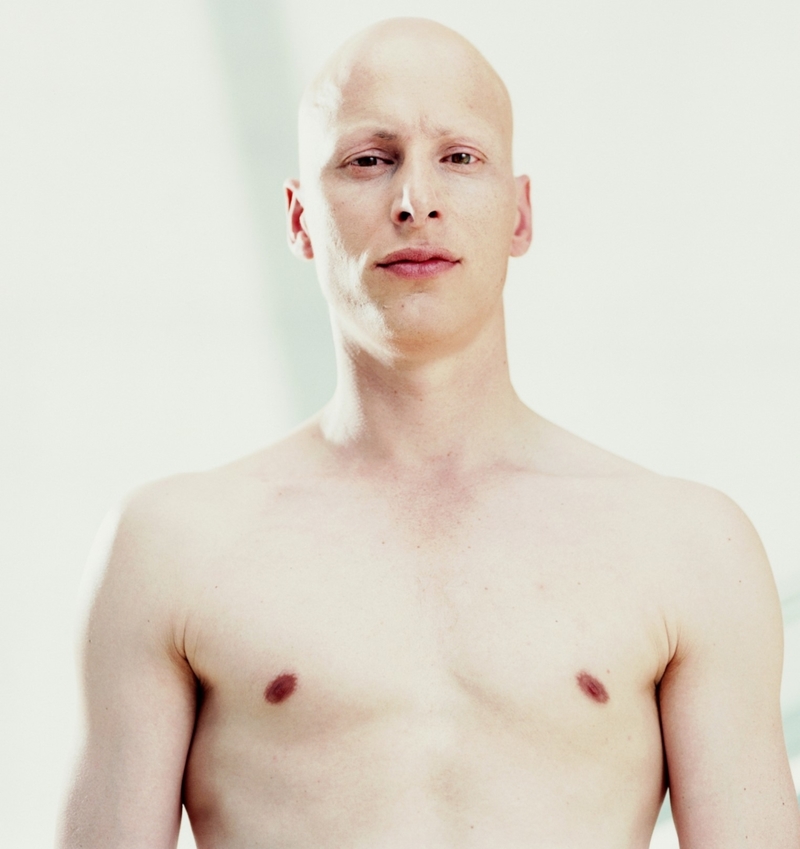
The true cause isn’t entirely known, but the current consensus is it’s an autoimmune disorder where the body attacks hair follicles. Once again, genetics may also play a part, as twenty percent of people with alopecia Universalis have a family member who is also affected.
These Feet are Deadly Weapons
Genetic and environmental factors combine to create something called clubfoot, where one of the feet or both are rotated inward and downward on newborn children. The foot and leg may also be smaller than is normal, but various treatments are available to correct the issues. These include casting, manipulation of the Achilles tendon, braces, and surgery.

Without this help walking can be painful and difficult, though as long as it’s treated with time, people who have developed clubfoot usually have no issues in life other than an interesting fact about themselves. It’s more common, for some reason, in first children as well as males.
No Colors Here
Color blindness – or color vision deficiency – is the decreased ability to see color or differences in color. There are several versions, including total color blindness where the sufferer only sees in shades of gray. The most common cause of this disorder is a genetic problem in the development of the eyes’ cone cells, which sense color.
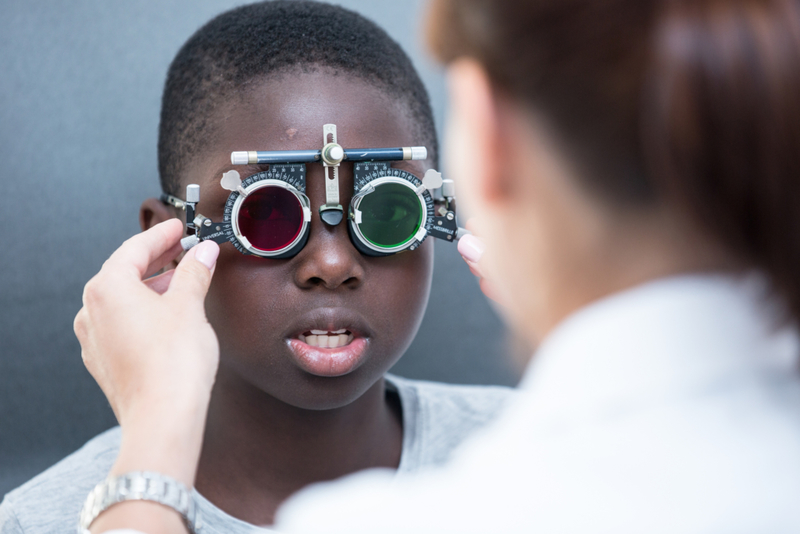
Since the genes that carry these problems are on the X chromosome, men suffer from this disorder far more than women. The disorder makes people unable to have certain jobs, including pilots, train drivers, and many positions in the armed forces.
Sneezing in the Sun
A number of humans have something called the photic sneeze reflex – there’s a reasonable chance you have it since it affects a quarter of the population. If you’ve ever sneezed when you step into bright sunlight, then you have it.

Scientists are, to put it mildly, baffled about why this happens. However, it’s clear it’s genetic – if one of your parents has it, you have a fifty percent chance of also having it. While sneezing isn’t really dangerous, having a weakness for bright lights during driving or operations can pose some interesting problems.
Dry Earwax? Wet? Sticky? Your Genes Decide
Earwax is pretty much a human constant, but there are a bunch of different versions. Some of it is dry, flaky, and gray, while other people produce it wet, yellow, and sticky. It’s all because of one gene, ABCC11.
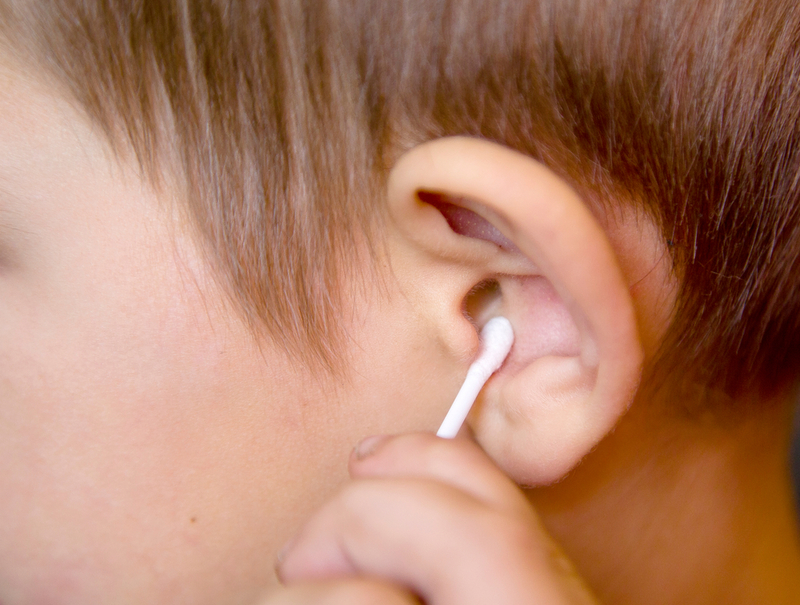
The version of the gene – called an allele – determines the production of this substance. That’s about it as far as the reasoning goes, but the same gene is also responsible for body odor, primarily the smell of your armpits. If you have wet, sticky earwax, there’s a bigger chance to have a stronger body odor.
Going to Bed Late or Getting up Early
We all have a part of the day when we feel most alert, awake, and productive. You might be a night owl or a morning lark, or you might be some time in between, but once again this is all thanks to our genes.
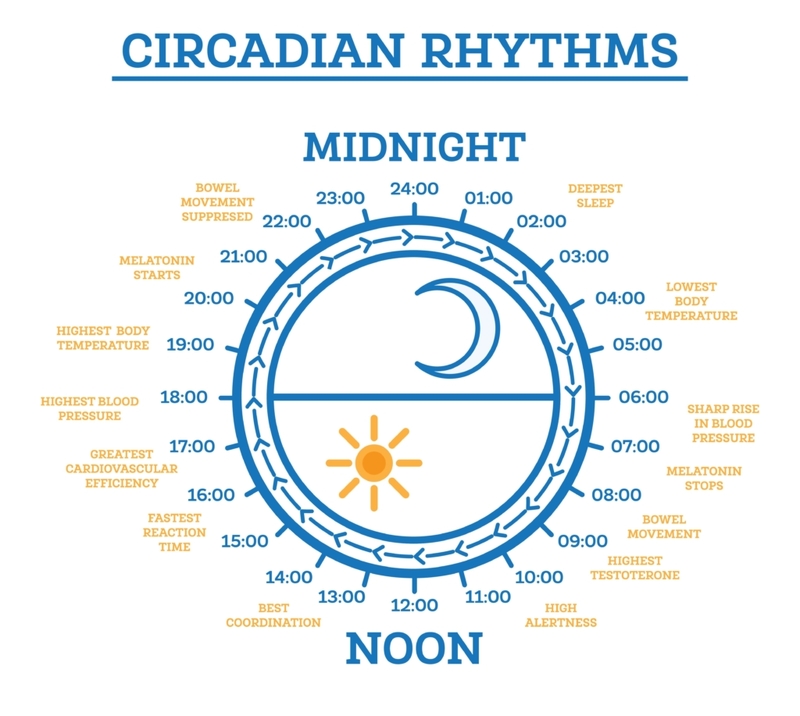
Our circadian rhythm runs on a twenty-four-hour schedule, but genes can slow it down or speed it up slightly. Those who have a fast rhythm will feel full of energy in the morning but crash at night, while those with a slow rhythm will be slow in the morning and have lots of energy at night.

Whale Wouldn’t Leave Her Alone, She Soon Realized Why

More Partners of Famous LGBT Entertainers

The Overlooked and Undermarketed: These Great Cars Never Stood a Chance

Rocking the Boat: Cruise Ship Staff & Their Secrets

More Jaw Dropping Celebrity Private Jets & Yachts

Little Known Secrets About “Dirty Dancing”

Jobs That Pay Over $100,000 That Will Surprise You!

The Biggest Box Office Movie Flops Ever Made Part 2

Beautiful Body Art

Why the ‘Sweet Caroline’ Singer Had to Retire the Mic







